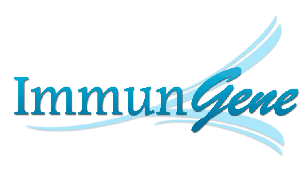预约演示
更新于:2025-05-07
IFN α x IFNAR
更新于:2025-05-07
关联
2
项与 IFN α x IFNAR 相关的药物作用机制 IFNA抑制剂 [+1] |
在研机构 |
原研机构 |
在研适应症 |
最高研发阶段临床2期 |
首次获批国家/地区- |
首次获批日期1800-01-20 |
作用机制 IFNA调节剂 [+1] |
在研机构- |
原研机构 |
在研适应症- |
最高研发阶段无进展 |
首次获批国家/地区- |
首次获批日期1800-01-20 |
4
项与 IFN α x IFNAR 相关的临床试验NCT02980198
A Phase IIa, Single Blind, Randomized, Study to Evaluate the Safety, the Immunogenicity, and the Clinical and Biological Efficacy of IFNα-Kinoid (IFN-K) in Adult Subjects With Dermatomyositis
This study is a Proof of Concept study aiming to evaluate the production of anti-IFNα antibodies (immune response) in adult subjects with dermatomyositis
开始日期2017-05-03 |
申办/合作机构 |
NCT02665364
A Phase IIb, Randomized, Double-Blind, Placebo-Controlled Study to Evaluate the Neutralization of the Interferon Gene Signature and the Clinical Efficacy of IFNα-Kinoid in Adult Subjects With Systemic Lupus Erythematosus
The safety and immunogenicity of the IFNα-Kinoid (IFN-K) have been evaluated in a phase I clinical study conducted in subjects with Systemic Lupus Erythematosus (SLE). Preliminary results showed acceptable safety profile and patients developped antibodies response.
The principal aim of the present study is to confirm the neutralization of the interferon gene signature and the clinical efficacy of IFN-K in subjects with SLE. In addition, the immune responses and the safety elicited by IFN-K will also be evaluated.
The principal aim of the present study is to confirm the neutralization of the interferon gene signature and the clinical efficacy of IFN-K in subjects with SLE. In addition, the immune responses and the safety elicited by IFN-K will also be evaluated.
开始日期2015-09-23 |
申办/合作机构 |
EUCTR2015-001341-86-BE
A Phase IIb, Randomized, Double-Blind, Placebo-Controlled Study to Evaluate the Neutralization of the Interferon Gene Signature and the Clinical Efficacy of IFNa-Kinoid in Adult Subjects with Systemic Lupus Erythematosus - Phase IIb study of IFN-K in Systemic Lupus Erythematosus
开始日期2015-09-07 |
申办/合作机构- |
100 项与 IFN α x IFNAR 相关的临床结果
登录后查看更多信息
100 项与 IFN α x IFNAR 相关的转化医学
登录后查看更多信息
0 项与 IFN α x IFNAR 相关的专利(医药)
登录后查看更多信息
502
项与 IFN α x IFNAR 相关的文献(医药)2025-06-02·Journal of Experimental Medicine
Type I interferon autoantibody footprints reveal neutralizing mechanisms and allow inhibitory decoy design
Article
作者: Labhardt, Niklaus ; Tarr, Philip ; Speck, Roberto ; Hasse, Barbara ; Salazar-Vizcaya, Luisa ; Hoffmann, Matthias ; Kovari, Helen ; Haerry, David ; Perreau, Matthieu ; Weisser, Maja ; Enkelmann, Jannik ; Trkola, Alexandra ; Cavassini, Matthias ; Calmy, Alexandra ; Filippidis, Paraskevas ; Paioni, Paolo ; Müller, Nicolas ; Fehr, Jan ; Abela, Irene A. ; Kusejko, Katharina ; Kouyos, Roger Dimitri ; Jackson-Perry, David ; Wendel-Garcia, Pedro D. ; Nicca, Dunja ; Günthard, Huldrych Fritz ; Metzner, Karin Jutta ; Staiger, Willy I. ; Pantaleo, Giuseppe ; Roche-Campo, Ferran ; Groen, Kevin ; Aebi-Popp, Karoline ; Keiser, Olivia ; Sauras-Colón, Esther ; Hale, Benjamin G. ; Stöckle, Marcel ; Hösli, Irene ; Anagnostopoulos, Alexia ; Fellay, Jacques ; Martinez de Tejada, Begogna ; Battegay, Manuel ; Hachfeld, Anna ; Bucher, Heiner C. ; Bernasconi, Enos ; Kahlert, Christian R. ; Dollenmaier, Günter ; Schmid, Patrick ; Wandeler, Gilles ; Elzi, Luisa ; Yerly, Sabine ; Klimkait, Thomas ; Fernbach, Sonja ; Huber, Michael ; Braun, Dominique Laurent ; Nemeth, Johannes ; Leuzinger, Karoline ; Ciuffi, Angela ; Kouyos, Roger D. ; Egger, Mattias ; Brugger, Silvio D. ; Marzolini, Catja ; Kuratli, Roger ; Notter, Julia ; Rauch, Andri ; Kaiser, Laurent ; Furrer, Hansjakob ; Günthard, Huldrych F. ; Hirsch, Hans H. ; Fux, Christoph A. ; Lejeune, Marylène
2025-04-01·Immunology Letters
Gut TLRs and IFN pathways mRNA expression and frequencies of CD4+ T cell expressing CD38 or HLA-DR go in parallel during HIV immunopathogenesis
Article
作者: Fracella, Matteo ; Ceccarelli, Giancarlo ; d'Ettorre, Gabriella ; Mastroianni, Claudio M ; Lazzaro, Alessandro ; Frasca, Federica ; Bugani, Ginevra ; Santinelli, Letizia ; Scagnolari, Carolina ; Maddaloni, Luca
2025-03-01·BJA Open
The concerted actions of microRNA-29a and interferon-β modulate complete Freund's adjuvant-induced inflammatory pain by regulating the expression of type 1 interferon receptor, interferon-stimulated gene 15, and p-extracellular signal-regulated kinase
Article
作者: Hung, Kuo-Chuan ; Tan, Ping-Heng ; Liu, Chien-Cheng ; Chow, Lok-Hi ; Chu, Chin-Chen ; Li, Yu-Yu ; Yi-Kung Huang, Eagle
17
项与 IFN α x IFNAR 相关的新闻(医药)2025-04-29
·抗体圈
这篇文章于2022年发表在ImmuneNetw.,主要总结了自身免疫性疾病靶向免疫治疗最新进展。摘要: 在过去的几十年里,靶向炎性细胞因子、免疫细胞和细胞内激酶的生物药物和小分子抑制剂已成为治疗自身免疫性疾病的标准护理。抑制TNF、IL-6、IL-17和IL-23彻底改变了类风湿性关节炎、强直性脊柱炎和银屑病等自身免疫性疾病的治疗。使用抗CD20mAb的B细胞耗竭疗法在神经炎症性疾病患者中显示出有希望的结果,抑制B细胞存活因子被批准用于治疗系统性红斑狼疮。靶向Ag呈递细胞和T细胞上表达的共刺激分子也有望通过调节T细胞功能在自身免疫性疾病中具有治疗潜力。 最近,靶向JAK家族(负责多个受体信号转导)的小分子激酶抑制剂在自身免疫和血液疾病领域引起了极大的兴趣。然而,在治疗效果和安全性方面仍存在未满足的医疗需求。新兴疗法旨在使用先进的分子工程技术在不影响免疫功能的情况下诱导免疫耐受。【NO.1】背景介绍 自身免疫性疾病是以自身抗原炎症失调为特征的病理性疾病,影响3%-10%的普通人群。自身免疫性疾病的常规治疗方法抑制了一般免疫功能以调节不受控制的炎症。然而,这些治疗方法在异质性患者群体中并未完全成功,其疗效以牺牲副作用为代价,特别是感染风险增加,通常来自非选择性免疫抑制。为了克服传统疗法的局限性,目前的治疗方法旨在更选择性地抑制炎症信号,同时最大限度地减少对稳态免疫功能的破坏。 最近在了解疾病发病机制和新药制造技术方面取得的进展导致靶向免疫疗法广泛用于治疗自身免疫性疾病。此外,先进的分子工程技术催生了靶向可溶性介质或细胞表面标志物的重组蛋白治疗药物,如mAb和receptor-Ab融合蛋白。自1990年代首次批准靶向TNF的选择性蛋白质疗法用于类风湿性关节炎(RA)以来,靶向免疫疗法已成为治疗自身免疫性疾病的游戏规则改变者。根据全球药品市场报告,阿达木单抗多年来一直是全球最畅销的药物,其次是其他靶向免疫疗法,如pembrolizumab、ibrutinib和ustekinumab。 随着对疾病发病机制的了解迅速增加,许多靶向炎症信号通路的生物药物正在开发中,以治疗顽固性炎症性疾病。在成功引入生物疗法治疗自身免疫性疾病后,分子靶点已扩展到细胞内激酶。小分子激酶抑制剂阻断收敛信号在治疗效果和长期安全性方面具有重要意义。 本文总结了目前针对自身免疫性疾病发病机制中涉及的信号通路的治疗方法,并介绍了旨在诱导免疫耐受的新兴免疫疗法。由于靶向免疫疗法市场正在迅速增长,因此我们专注于已获得临床批准用于治疗自身免疫性疾病的药物。【NO.2】自身免疫性疾病中的炎症 炎症是生物体修复组织损伤并防止外来物质侵害的自然过程。然而,针对自身抗原的免疫反应失调会导致免疫耐受丧失和自身免疫性疾病的发展。自身免疫源于耐受性检查点的中枢和外周缺陷以及不耐受免疫细胞的激活。自身抗原可通过从免疫特权位点释放自身抗原、产生新自身抗原以及自身蛋白与外来物质的分子模拟来诱导。 自身免疫的临床表现多种多样,从存在自身抗体的无症状疾病到导致危及生命的器官损伤的暴发性自身免疫性疾病。自身免疫性疾病的发展可由遗传易感个体的环境因素触发。环境触发因素,包括压力、吸烟和感染,会诱导先天免疫的促炎功能,并促进适应性免疫的病理反应。 尽管自身免疫的传统概念是适应性免疫系统的失调,但越来越多的证据表明,先天免疫系统对自身免疫性疾病的发生和发展也至关重要。作为先天免疫的关键参与者,巨噬细胞和树突状细胞(DC)对于抗原呈递和促炎细胞因子(如TNF、IL-1β、IL-6、IL-23、B细胞激活因子(BAFF,也称为Blys或TNFSF13B)和增殖诱导配体(APRIL,也称为TNFSF13A)的产生至关重要。1型IFN与系统性红斑狼疮(SLE)及其相关疾病的发病机制密切相关,主要由浆细胞样DC(pDC)产生,浆细胞样DC是DC的一个特殊亚群。巨噬细胞/DC和T细胞/B细胞之间的相互作用进一步促进了自身免疫性炎症。 初始CD4+Th细胞根据细胞因子环境分化为不同的T细胞亚群。T细胞通过自身抗原识别、细胞因子产生和增强的细胞毒性,在自身免疫性疾病的发病机制中发挥关键作用。近几十年来,产生IL-17和FOXP3+Tregs的Th17细胞已被强调为自身免疫性疾病的治疗靶点。 自身反应性B细胞是适应性免疫的另一个主要组分,它产生病理性自身抗体,并通过Ag呈递和细胞因子产生激活T细胞。自身抗体的产生是各种自身免疫性疾病(包括RA和SLE)的标志。RA中的抗瓜氨酸肽抗体和SLE中的抗dsDNA抗体是导致临床表现和疾病活动度的代表性致病性自身抗体。由于B细胞在自身免疫中的重要作用,B细胞表面分子是各种自身免疫性疾病的治疗靶点。 来自活化免疫细胞的可溶性介质通过与它们的同源受体结合来转导炎症信号。一旦被炎性细胞因子结合,受体就会激活JAK家族,以诱导STAT的磷酸化、二聚化和核转位。STAT的基因转录促进细胞增殖和分化以及多种炎症介质的产生,进一步加剧自身免疫性炎症。 尽管每种自身免疫性疾病的病理生理机制不同,但几种常见的炎症途径可能是免疫治疗的治疗靶点。基于我们目前对自身免疫性炎症发病机制的理解,治疗自身免疫性疾病的关键治疗靶点如图1所示。表1、2、3列出了已批准用于自身免疫性疾病或正在临床开发的靶向免疫疗法,具体如下。本文重点介绍靶向免疫治疗在免疫介导的炎症性疾病领域的临床应用。图1.自身免疫性疾病发病机制中的关键治疗靶点表1.用于治疗自身免疫性疾病的细胞因子靶向疗法靶细胞因子结构药物临床应用正在调查中(IIb或III期)TNF-ɑsTNFR2-IgG1Fc依那西普RA、pJIA、AS、银屑病、PsA抗TNF单克隆抗体英夫利昔单抗RA、AS、银屑病、PsA、UC、CD超说明书使用:BD、结节病阿达木单抗RA、pJIA、AS、银屑病、PsA、UC、CD、化脓性毛突炎、葡萄膜炎超说明书使用:BD戈利木单抗RA、AS、PsA、UC赛妥珠单抗RA、AS、银屑病、PsA、CDIL-1IL-1R拮抗剂阿那白滞素RA、大写字母川崎病(NCT04656184)超说明书使用:AOSD、sJIA、痛风、复发性心包炎等IL-1R1-IgGFc利洛西普CAPS、DIRA、复发性心包炎超说明书使用:AOSD、痛风等IL-1β抗体抗卡纳单抗AOSD、sJIA、CAPS、TRAPS、HIDS/MKD、FMFCOVID19相关CRS(12)超说明书使用:痛风和许多其他IL-6(英语)IL-6单克隆抗体抗体西鲁尤单抗RA(13,14)*奥洛珠单抗RA(15)(NCT02760407,NCT02760433,NCT03120949)克拉扎奇珠单抗RA(NCT02015520)PsA(16)COVID19相关CRS(NCT04343989)西妥昔单抗CAR-T相关CRS(NCT04975555)IL-6R抗体抗体托珠单抗RA、sJIA、pJIA、SSc相关ILD、巨细胞动脉炎、CRSPMR(NCT02908217)超说明书使用:AOSD、Takayasu动脉炎NMOSD(17)COVID19肺炎(18,19)(NCT04409262)沙利尤单抗RA类COVID19相关CRS(20)(NCT04315298)沃巴利珠单抗RA(NCT02518620)IL-17(英语)IL-17单克隆抗体抗体依奇珠单抗银屑病、PsA、轴向SpA苏金单抗AS、银屑病、PsA系统性红斑狼疮(NCT04181762)轴向SpA(21)(NCT04156620,NCT04732117)Hiradenitissupprativa(NCT03713619,NCT03713632,NCT04179175)巨细胞动脉炎(NCT04930094)Grave眼病(NCT03713619)IL-17R抗体溴达利尤单抗牛皮癣轴向SpA(22)PsA(23)不锈钢(NCT03957681)IL17A/F抗体比莫珠单抗AS(NCT03928743)轴向SpA(NCT03928704,NCT04436640)银屑病(24,25)(NCT03598790,NCT03766685)PsA(NCT03895203、NCT03896581、NCT04009499NCT04109976)Hiradenitissuppruativa(NCT04242446,NCT04242498,NCT04901195)IL-23抗p40mAb抗体乌司奴单抗银屑病、PsA、UC、CD特发性炎性肌炎(NCT03981744)高安动脉炎(NCT04882072)抗p19mAb抗体古塞利尤单抗银屑病,PsAUC(NCT04033445)CD(NCT03466411,NCT04397263)瑞沙珠单抗牛皮癣PsA(26,27)UC(NCT03398135,NCT03398148)CD(NCT03104413、NCT03105102、NCT03105128NCT04524611)替尔拉奇珠单抗牛皮癣PsA(NCT03552276、NCT04314544、NCT04314531NCT04991116)米利珠单抗银屑病(NCT03482011、NCT03535194NCT03556202)UC(NCT03518086、NCT03519945NCT03524092)CD(NCT03926130,NCT04232553)1型IFN抗IFNR1单克隆抗体Anifrolumab系统性红斑狼疮备注:该表包括具有一种或多种已批准自身免疫性疾病适应症的药物。该适应症仅涵盖自身免疫性疾病领域。pJIA,多关节幼年特发性关节炎;UC,溃疡性结肠炎;CD,克罗恩病;BD,白塞病;sJIA,系统性幼年特发性关节炎;DIRA,IL-1受体拮抗剂缺乏;TRAPS,TNF受体相关周期性综合征;HIDS/MKD、高免疫球蛋白D综合征/甲羟戊酸激酶缺乏症;FMF,家族性地中海热;CRS,细胞因子释放综合征;CAR-T,嵌合Ag受体-T细胞;SSc相关ILD、系统性硬化症相关间质性肺病、PMR、风湿性多肌痛、NMOSD、视神经脊髓炎谱系疾病;中轴型SpA,中轴型脊柱关节炎。*尽管III期临床试验取得了积极结果,但由于安全性问题,FDA并未推荐将sirukumab用于治疗RA。表2.用于治疗自身免疫性疾病的细胞靶向疗法靶细胞结构药物临床应用正在调查中(IIb或III期)B细胞抗CD20mAb抗体利妥昔单抗RA类寻常型天疱疮(28)GPA、MPA超说明书使用:MS、免疫性血小板减少症奥瑞珠单抗女士奥法木单抗女士乌布利妥昔单抗MS(NCT03277261、NCT03277248NCT04130997)抗CD19mAb抗体因比利珠单抗NMOSDIgG4RD(NCT04540497)重症肌无力(NCT04524273)抗BAFF单克隆抗体贝利尤单抗系统性红斑狼疮抗BAFF-R单克隆抗体伊那单抗系统性红斑狼疮(NCT05126277)pSS(29)T细胞CTLA4-IgG1Fc阿巴西普RA,pJIApSS(NCT02067910,NCT02915159)PsA(30)特发性炎性肌炎(NCT02971683)GPA(NCT02108860)CD40mAb抗体伊斯卡利单抗pSS(NCT03905525)备注:该表包括已批准用于自身免疫性疾病或基于II期试验的积极结果正在临床开发的药物。GPA,肉芽肿性多血管炎;MPA,显微镜下多血管炎;NMOSD,视神经脊髓炎谱系疾病;IgG4RD,免疫球蛋白G4相关疾病;pJIA,多关节幼年特发性关节炎。表3.用于治疗自身免疫性疾病的激酶靶向疗法靶标激酶结构药物临床应用正在调查中(IIb或III期)杰克JAK1/3抑制剂托法替布RA类贾(31)(NCT01500551,NCT03000439)PsAAS(32))UC(英语)JAK1/2抑制剂巴瑞替尼RA类系统性红斑狼疮(NCT03843125,NCT03616912,NCT03616964)JIA(NCT03773965,NCT03773978)sJIA(NCT04088396)特应性皮炎(33,34)葡萄膜炎(NCT04088409)JAK1选择性抑制剂乌帕替尼RA类CD(NCT03345823、NCT03345836NCT03345849)PsA加州大学(35)(NCT03006068,NCT03653026)轴向SpA(NCT04169373)特应性皮炎(36,37)(NCT03661138,NCT04195698)高安动脉炎(NCT04161898)巨细胞动脉炎(NCT03725202)非戈替尼RA(由EMA和日本提供)统一(38)(NCT02914535)CD(NCT02914561,NCT02914600)TYKTYK2选择性抑制剂Deucravacitinib银屑病(NCT03624127,NCT03611751)PsA(NCT04908189,NCT04908202)BTK公司BTK抑制剂Evobrutinib(依布替尼)MS(NCT04338022,NCT04338061)托布替尼MS(NCT04410978、NCT04410991、NCT04411641NCT04458051)重症肌无力(NCT05132569)非布替尼MS(NCT04544449、NCT04586010NCT04586023)利扎布替尼寻常型天疱疮(NCT03762265)免疫性血小板减少症(NCT04562766)备注:该表包括已批准用于自身免疫性疾病或基于II期试验的积极结果正在临床开发的药物。UC,溃疡性结肠炎;sJIA,系统性幼年特发性关节炎;CD,克罗恩病;中轴型SpA,中轴型脊柱关节炎。【NO.3】细胞因子靶向治疗肿瘤坏死因子(TNF) TNF是一种主要由髓系细胞和活化T细胞产生的促炎细胞因子。RA滑膜中TNF表达的增加和TNF转基因小鼠中关节炎的发展表明TNF在慢性炎症中的致病作用。抗TNF治疗的成功彻底改变了RA患者的治疗策略。自1998年英夫利昔单抗和依那西普首次获批以来,已有4种单克隆抗体(英夫利昔单抗、阿达木单抗、戈利木单抗和赛妥珠单抗)和1种受体-Fc融合蛋白(依那西普)获批,目前可用于治疗慢性免疫介导的疾病,包括RA、幼年特发性关节炎(JIA)、强直性脊柱炎(AS)、银屑病和银屑病关节炎(PsA)。这种mAb也适用于治疗炎症性肠病和非感染性葡萄膜炎。 尽管TNF具有促炎作用,但它是一种多效性细胞因子,依赖于TNF受体(TNFR)的结合。TNFR1在几乎所有有核细胞上组成性表达,主要负责TNF的炎症功能,而TNFR2仅在特定细胞类型上表达,例如髓源性抑制细胞、Treg细胞和单核细胞,与TNF的调节功能相关。源自TNFR1和TNFR2的不同信号转导通路已在其他地方进行了综述。目前可用的抗TNF疗法同时抑制TNFR1和TNFR2。由于TNF的调节方面,TNF阻断可能反常地诱导Th1/Th17细胞扩增和IFN反应失调,这可以解释抗TNF治疗期间治疗失败、自身抗体生成和反常银屑病的原因。因此,正在研究抑制TNFR1和增强TNFR2的更多选择性治疗。IL-1 IL-1α和IL-1β是IL-1家族的成员,是促炎细胞因子,与先天免疫反应密切相关。尽管IL-1α和IL-1β通过与IL-1受体1(IL-1R1)结合而具有共享生物学功能,但IL-1α与IL-1β的几个特征是不同的。在间充质细胞中组成型表达的pro-IL-1α具有生物活性,而巨噬细胞产生的pro-IL-1β需要被caspase-1切割才能成为活性IL-1β。pro-IL-1β的Caspase-1依赖性裂解是通过激活包含核苷酸结合结构域成员和包含亮氨酸富集重复序列的[NLR]蛋白家族(例如NLR家族含pyrin结构域的[NLRP]1、NLRP3、NLR家族CARD结构域4)或包含PYRIN-HIN-200结构域的蛋白家族成员(例如,在黑色素瘤2中不存在)的炎性小体激活来介导的)。此外,与IL-1β相反,IL-1α在体循环中未检测到,这表明IL-1α在自身免疫性疾病中的致病作用是局部的,而不是全身的。目前,IL-1β被认为比IL-1α与多种风湿性疾病更密切相关,包括全身性JIA、成人发病斯蒂尔病(AOSD)和痛风,以及与遗传性自身炎症性疾病的相关性,例如冷热蛋白相关周期性综合征(CAPS)和家族性地中海热。 被IL-1α或IL-1β占据后,IL-1R1与IL-1R3形成异源三聚体复合体,以募集髓样分化初级反应基因88(MYD88),从而触发随后的激酶级联反应(IL-1R相关激酶[IRAK]、IκB激酶、IκB和NF-κB),从而促进促炎状态。IL-1的这种炎症活性受来自同一IL-1家族的天然IL-1R拮抗剂(IL-1Ra)的调节。IL-1Ra占据IL-1R1导致构象变化,阻碍异源三聚体复合物与IL-1R3的形成,从而阻碍IL-1介导的炎症过程。 目前,已有3种蛋白质疗法被批准用于抗IL-1疗法:canakinumab,一种抗IL-1βmAb;anakinra,一种重组IL-1受体拮抗剂;和rilonacept,一种IL-1R1-Fc融合蛋白。根据它们的分子结构,所有3种药物都阻断IL-1β,阿那白滞素和利洛西普也抑制IL-1α。作为一种抑制IL-1信号转导的新治疗方法,口服NLRP3抑制剂,包括达潘舒腈(OLT177),正在研究中。 在早期临床开发中,阿那白滞素被测试为RA的治疗方法。尽管阿那白滞素在RA患者中的治疗效果已得到证实,但由于其成本效益低,因此不推荐将阿那白滞素作为一线生物疗法。抗IL-1疗法更广泛地用于自身炎症性疾病,如全身性JIA、AOSD和CAPS。其他具有高炎症负荷的疾病,例如痛风和复发性心包炎,也可通过IL-1靶向治疗进行控制。由于IL-1在炎症性疾病中的广泛作用,IL-1阻断有望在治疗顽固性自身免疫性疾病(包括SLE和系统性硬化症)以及控制过度的促炎反应(如细胞因子释放综合征和巨噬细胞激活综合征)方面提供临床益处。IL-6 IL-6是一种多效性细胞因子,由各种细胞类型在感染、炎症和恶性肿瘤的情况下产生。IL-6最初被鉴定为T细胞分泌的“B细胞分化因子”或“B细胞刺激因子”。尽管抗IL-6疗法在B细胞成熟中起着关键作用,但其对多发性骨髓瘤患者的治疗效果不佳。然而,托珠单抗(第一种抗IL-6R阻断单克隆抗体)的IL-6靶向治疗被证明在RA中具有显着的临床益处,甚至在疗效上优于阿达木单抗。托珠单抗目前被批准用于治疗RA、JIA、AOSD、巨细胞动脉炎和细胞因子释放综合征,因为它能够调节全身性过度炎症。最近,已研究抗IL-6疗法在SLE、视神经脊髓炎和系统性硬化症中的治疗应用。 IL-6在生理和病理条件下具有多种生物学功能。在生理状态下,IL-6负责巨噬细胞分化为M2状态,通过成骨细胞上RANK配体表达的增加进行破骨细胞生成,以及通过肝脏中的JAK-STAT通路进行急性期反应。在病理(炎症)条件下,IL-6通过调节FOXP3、RORC和IL-23R表达,关键参与Th17分化。IL-6对滤泡辅助性T细胞的发育和B细胞的成熟也很重要。 IL-6信号转导通过IL-6R和糖蛋白130(gp130)的复合物转导。gp130二聚化依次激活多个信号转导通路,包括JAK-STAT、MAPK、PI3K和YES相关蛋白1,这些蛋白转位到胞核并控制与细胞生长、增殖和炎症相关的基因转录。为了干扰IL-6信号通路,抗IL6疗法可以靶向IL-6、IL-6R、gp130、JAK和STAT3。然而,对副作用的担忧限制了gp130和STAT3作为治疗靶点的潜力。因此,抗IL6mAb、抗IL-6RmAb和JAK抑制剂已被用于阻断IL-6信号转导,并且使用可溶性gp130抑制IL-6/IL-6R复合体的可能性正在研究中。IL-17 IL-17A,通常称为IL-17,是CD4+T细胞Th17亚群的标志性细胞因子,但它也由CD8+T细胞(Tc17)、γδT细胞、自然杀伤T细胞、第3组先天性淋巴细胞和中性粒细胞产生。在生理状态下,Th17细胞通过募集中性粒细胞、宿主对细菌和真菌的防御以及皮肤和粘膜部位的组织修复来促进先天免疫。在病理条件下,IL-17A与TNF和其他炎性趋化因子协同作用,促进自身免疫。炎症性关节炎和神经炎症的动物模型表明,Th17细胞而不是Th1细胞在这些疾病的发展中起主要作用。 Th17细胞在IL-1β、IL-6和TGF-β存在下,通过抑制FOXP3并激活STAT3和RORC来源于初始CD4+初始T细胞。随后,IL-23稳定致病性Th17细胞的增殖和存活。与IL-17A结合后,IL-17R亚基A(IL-17RA)和亚基C(IL-17RC)的称为SEF/IL-17R的独特胞质结构域募集接头蛋白Act1,从而触发TNF受体相关因子(TRAF)6的泛素化,随后激活NF-κB、MAPK和激活蛋白1(AP1)通路和C/EBP转录因子。 来自动物和人类研究的越来越多的证据表明,IL-23/IL-17轴是多种自身免疫性疾病(如AS、PsA和RA)的极好治疗靶标。目前的抗IL-17疗法包括IL-17A(苏金单抗和依奇珠单抗)和IL-17RA(brodalumab)的mAb。正如预期的那样,抗IL-17疗法在银屑病、PsA和AS中产生了显著的反应。出乎意料的是,这种方法在RA(一种Th17依赖性疾病)患者中未能显示出显着的临床疗效。这种不令人满意的结果可以通过疾病本身的异质性或IL-17A的不同致病作用来解释,具体取决于RA分期(例如早期与晚期)。IL-23 IL-23是一种由DC和活化的巨噬细胞分泌的促炎细胞因子。作为IL-12家族的一员,IL-23是一种异二聚体,由IL-12共有的p40亚基(IL-12/IL-23p40)和IL-23特有的p19亚基(IL-23p19)组成。尽管IL-12和IL-23共享一个结构亚基,但IL-23更重要、更广泛地参与自身免疫性疾病的发病机制。最重要的是,IL-23通过维持Th17特征基因、抑制抑制因子、上调IL-23R表达和诱导效应基因来稳定Th17细胞的致病特征。它还作为自分泌因子促进DC和巨噬细胞的促炎功能。 IL-23与由IL-12Rβ1(与IL-12/IL-23p40结合)和IL-23R(与IL-23p19结合)组成的受体复合体相互作用,它们分别与酪氨酸激酶(TYK)2和JAK2结合。TYK2和JAK2的激活导致STAT的磷酸化和核转位,主要是STAT3。通过靶向抑制IL-12/IL-23p40或IL-23p19,可以阻断IL-23信号传导。作为一种抗IL-12/IL-23p40mAb,乌司奴单抗可阻断IL-12和IL-23,而抗IL-23p19mAb(guselkumab、tildrakizumab、risankizumab和mirikizumab)仅抑制IL-23。 与抗IL-17治疗类似,IL-23抑制可有效治疗银屑病和PsA。然而,与抗IL17治疗相比,靶向p40和p19亚基的mAb均未能改善AS的临床病程。尽管IL-23在AS的临床前模型中具有明显的致病作用,但这种意外结果表明,IL-23在人类自身免疫性疾病的组织和时间依赖性环境中发挥着不同的作用。在克罗恩病中,乌司奴单抗成功改善了临床结局,抗IL-23p19mAb的临床试验正在进行中(表1)。1型IFN 1型IFN,包括IFN-α、IFN-β、IFN-ε、IFN-κ和IFN-ω,最初被鉴定为可溶性抗病毒因子。随后的研究表明,IFN-α在自身免疫性疾病,尤其是SLE的发病机制中起着至关重要的作用。SLE患者的临床数据显示1型IFN特征的表达显著增加。重组IFN-α治疗后SLE样综合征的发展也表明1型IFN在自身免疫性疾病中的病理作用。 虽然大多数有核细胞可以产生1型IFN,但主要的细胞来源是pDC。含核酸的细胞外刺激,例如分别与抗RNA和DNA自身抗体复合的RNA和DNA,与pDC中的Toll样受体7(TLR7)和TLR9相互作用,以募集MYD88并激活IRAK和TRAF,从而导致IFN调节家族(IRF)7易位并导致IFN-α转录)。1型IFN与由IFNAR1和IFNAR2组成的IFN-α/β受体(IFNAR)结合。与1型IFN结合后,IFNAR1和IFNAR2分别激活JAK1和TYK2,从而导致STAT1和STAT2磷酸化和核转位。在胞核中,STAT1/STAT2与IRF9一起诱导IFN刺激基因的表达。在SLE中,IFN-α通过刺激髓系DC、Th1细胞和B细胞以及抑制Treg来促进促炎反应。 IFN-α在SLE中的病理生理学意义导致了1型IFN靶向免疫治疗的发展。在SLE中测试了Rontalizumab和sifalimumab中和干扰素α的单克隆抗体,但未能控制疾病活动。尽管IFN-α以外的IFN的作用尚不清楚,但仅抑制IFN-α而保持IFN-β和IFN-κ活性可能解释了SLE治疗效果不足的原因。最近,anifrolumab是一种靶向IFNAR1以阻断所有1型IFN生物学功能的人单克隆抗体,已被批准用于中度至重度SLE。Anifrolumab在减少疾病活动、口服皮质类固醇使用和年化发作方面显示出一致的临床益处。然而,狼疮性肾炎和神经精神性狼疮患者被排除在临床试验之外。 几种阻断1型IFN的新治疗方法正在研究中。为了减少1型IFN的产生,药物靶向pDC和信号转导分子,如TLR、MyD88和IRAK4。激酶抑制剂也正在临床开发中,用于治疗各种自身免疫性疾病,具体取决于它们抑制IFNAR下游信号通路的能力。【NO.4】细胞靶向治疗B细胞 随着我们对B细胞功能的理解不断扩大,B细胞被认为是自身免疫性疾病的积极参与者。有趣的是,B细胞耗竭疗法在RA和多发性硬化症(MS)中的成功突出了B细胞在自身免疫中的病理意义。除了在Ab产生中发挥作用外,B细胞还通过Ag呈递、三级淋巴组织的形成和细胞因子(如IL-6、TNF、IFN-γ和GM-CSF)的产生积极参与自身免疫。B细胞的Ab非依赖性功能解释了RA和MS中B细胞耗竭疗法的治疗效果,尽管没有自身抗体减少。 B细胞在骨髓中产生,并在外周组织中依次分化为Ag特异性B细胞。B细胞分化通过体细胞超突变和免疫球蛋白的类别转换重组,伴随着B细胞表面标志物的变化,继续增加对Ag的亲和力。CD20仅在从前B细胞到记忆B细胞的B细胞谱系中表达,但不在浆细胞中表达(图1)。在过去的几十年里,抗CD20疗法一直是B细胞耗竭的主要工具。利妥昔单抗是一种嵌合抗CD20mAb,可将CD20再分布到脂筏中,然后激活补体依赖性细胞毒性和Ab依赖性细胞毒性(ADCC)。利妥昔单抗有效消除CD20+B细胞会耗尽分泌Ab的浆母细胞的细胞来源,并阻止不依赖Ab的B细胞功能,从而减轻自身免疫性炎症。随着利妥昔单抗在RA和MS中的临床成功,已经开发了具有不同结合表位、不同给药途径和先进治疗效果的多种抗CD20疗法。Ocrelizumab和ofatumumab是人源化抗CD20mAb,已被批准用于复发性MS,其他抗CD20mAbobinutuzumab和ublituximab的临床试验正在进行中(表2)。 但是,利妥昔单抗在治疗SLE方面并未完全成功,SLE是刻板的B细胞介导的疾病之一。除了SLE患者的异质性外,利妥昔单抗治疗失败还可能由于存在自身反应性CD20−(但CD19+)长寿命浆细胞、外周血和组织中B细胞不完全耗竭或B细胞重建过程中的疾病发作。为了广泛抑制对抗CD20治疗耐药的B细胞,B细胞耗竭疗法靶向CD19,CD19在CD20+B细胞以及CD20-浆母细胞和一些浆细胞上表达。人源化抗CD19mAbinebilizumab被批准用于治疗视神经脊髓炎谱系疾病,并且正在进行临床试验以治疗其他炎症性神经系统疾病(表2)。 抑制B细胞的另一种方法是阻断B细胞存活因子,特别是BAFF和APRIL。BAFF与其3种不同受体连接后,与B细胞成熟和存活密切相关:1)BAFF受体(BAFF-R,称为TNFRSF13C),在除浆细胞外的大多数B细胞亚群上表达;2)跨膜激活剂、钙调节剂和亲环蛋白配体相互作用剂(TACI;称为TNFRSF13B),在边缘区B细胞、记忆B细胞和浆细胞上表达;3)B细胞成熟Ag(BCMA;称为TNFRSF17)在浆母细胞和浆细胞上表达。与BAFF-R不同,TACI和BCMA也与APRIL结合,这对Ab类别转换和浆细胞存活很重要。 鉴于B细胞成熟、增殖和存活的重要作用,BAFF/APRIL系统被认为是SLE及其相关自身免疫性疾病中一个有前途的治疗靶点。贝利尤单抗是一种人源化抗BAFFmAb,是FDA批准用于SLE的第一个靶向免疫疗法。然而,贝利尤单抗并不总是对所有SLE患者具有普遍的治疗益处。Ianalumab是一种抗BAFF-R的单克隆抗体,在原发性干燥综合征(pSS)患者的II期试验中显示出有希望的结果。作为B细胞耗竭疗法,ianalumab有2种作用模式:通过增强ADCC裂解B细胞和阻断BAFF信号传导。Telitacicept是一种TACI-Ig融合蛋白,基于其对BAFF/APRIL系统的抑制作用,也正在临床开发中。T细胞 作为适应性免疫的关键调节因子,T细胞在自身免疫的发生和发展中起着关键作用。T细胞效应器功能需要TCR的Ag识别和共刺激受体的额外参与。因此,已经研究了这些共刺激分子的调节用于自身免疫性疾病和恶性肿瘤的T细胞靶向治疗。 CD28信号转导是通过激活MAPK、AKT和NF-κB通路进行T细胞激活和分化的一种众所周知的共刺激通路。CD4+T细胞上表达的CD28与Ag呈递细胞上的CD80或CD86结合,CTLA-4作为CD28的抑制性对应物共享。基于CD28和CTLA-4的反调节,开发了一种由CTLA4胞外结构域和IgGFc区(CTLA4-Ig)组成的融合蛋白,通过占据CD80和CD86来抑制CD28信号传导。第一个CTLA4-Ig阿巴西普被批准用于治疗RA和JIA,已证实对控制炎症性关节炎有效。随后,另一种与CD80和CD86结合改善的CTLA4-Igs(包括belatacept和MEDI5256)已被研究用于临床应用。尽管贝拉西普于2011年被批准用于肾移植受者,但贝拉西普在基于钙调磷酸酶抑制剂的常规方案之外的额外临床益处存在争议。 CD40通路是T细胞效应器功能的主要激活信号。CD40L与CD40连接后,CD80和CD86表达上调。当活化T细胞上的CD40L与靶细胞上的CD40结合时,多个激酶级联反应会激活转录因子,如NF-κB和AP1,以诱导细胞存活、增殖和分化。CD40信号转导对于参与T细胞依赖性Ab反应、生发中心形成和记忆B细胞分化的B细胞-T细胞相互作用尤为重要。由于其在B细胞功能中的关键作用,靶向CD40信号转导的治疗潜力已在临床前和临床研究中得到研究。iscalimab(一种人源化抗CD40mAb)最近的II期试验显示pSS患者的临床改善,随后的III期试验正在进行中(表2)。 靶向其他共刺激信号转导的免疫疗法,如诱导型T细胞共刺激因子(ICOS)和OX40通路,也正在开发中,以抑制自身免疫性疾病中的T细胞效应功能。作为在活化的CD4+T细胞上表达的共刺激分子,ICOS和OX40参与T细胞的存活、分化和活化。【NO.5】激酶靶向治疗 如前所述,将可溶性炎症介质与其同源受体结合通过激活细胞内激酶(通常是JAK家族)来转导信号。JAK家族由JAK1、JAK2、JAK3和TYK2组成,与细胞因子受体(包括IL-2R、IL-4R、IL-5R、IL-6R、IL-13R和1型IFN)、生长激素和促红细胞生成素有关。JAK家族的激活导致STAT的磷酸化、二聚化和核转化。在细胞核中,STAT有助于参与细胞分化、增殖和存活、细胞因子产生和血管生成的基因转录。 由于JAK在造血中的关键作用,JAK抑制剂首次被评估用于治疗血液病,尤其是骨髓增生性肿瘤。自ruxolitinib(一种JAK1和JAK2抑制剂)于2011年首次被批准用于治疗骨髓纤维化以来,许多激酶抑制剂已被批准或研究用于治疗血液系统恶性肿瘤和炎症性疾病。几种JAK抑制剂已根据其经证实的临床疗效被批准用于RA、PsA和溃疡性结肠炎。每种JAK抑制剂对JAK的选择性不同,但尚未证明JAK抑制剂之间的治疗效果存在差异。Tofacitinib和baricitinib分别主要靶向JAK1/3和JAK1/2。Upadacitinib和filgotinib是第二代JAK抑制剂,可选择性抑制JAK1。 与上述调节细胞外间隙细胞激活信号的免疫疗法相比,JAK抑制剂靶向细胞内间隙的信号通路。JAK靶向治疗会抑制来自多个细胞因子受体的收敛信号,并破坏反馈回路。因此,即使部分阻断选定的激酶也可以有效地下调多种炎症信号通路,减轻自身免疫性炎症。应该注意的是,在一项头对头的随机对照试验中,巴瑞替尼显示出比抗TNFmAb阿达木单抗更好的临床反应。 除JAK抑制剂外,选择性TYK2抑制剂deucravacitinib正在等待临床批准,作为银屑病的首个口服靶向治疗。TYK2介导源自IL-12、IL-23和1型IFN的细胞内炎症信号。根据对PsA、炎症性肠病和SLE患者的机制见解,目前正在研究deucravacitinib在PsA、炎症性肠病和SLE患者中的治疗潜力(表3)。 布鲁顿酪氨酸激酶(BTK)抑制剂也有望通过调节B细胞功能来改善自身免疫性炎症。目前正在研究BTK抑制剂在各种自身免疫性疾病中的应用,包括RA、MS、pSS和SLE。最近一些使用BTK抑制剂的II期试验在复发性MS患者中显示出有希望的结果。 激酶抑制的未来方向是基于先进的分子技术开发更具选择性的抑制剂,具有最小的脱靶效应和更高的器官特异性。此外,应广泛研究由不受调节的细胞行为引起的除改善炎症以外的靶向效应。最近的证据表明,接受托法替布治疗的患者面临心脏事件、恶性肿瘤、血栓形成和死亡的风险增加,FDA已决定修改JAK抑制剂的黑框警告。自身免疫性疾病的慢性病程引发了对长期药物使用的安全性担忧,这会严重影响患者和医生的药物选择。【NO.6】新兴免疫疗法 随着对自身免疫性疾病免疫发病机制的更好理解和生物技术的不断进步,许多具有新治疗靶点和先进疗效的药物不断被开发出来,显示出有希望的疗效。尽管如此,仍然存在未满足的医疗需求,例如异质性治疗效果和免疫抑制引起的不良事件。为了克服当前治疗的局限性,炎症性疾病的治疗方法已经多样化和个体化。在这里,我们简要介绍了由先进分子工程技术实现的靶向免疫治疗的新视角。嵌合抗原受体(CAR)T细胞疗法 CART细胞疗法的基本概念是施用含有基因工程TCR的自体T细胞,以捕获肿瘤特异性Ag并通过增加细胞毒性来消除肿瘤细胞。在弥漫性大B细胞淋巴瘤患者治疗成功后,CD19CART细胞疗法被批准用于治疗B细胞淋巴瘤和急性淋巴细胞白血病。 CAR是由胞外Ag识别结构域、跨膜结构域和胞内T细胞激活结构域组成的工程化受体。细胞外结构域,也称为单链Fv,被设计为单克隆抗体的可变重链和轻链。细胞外结构域对Ag的识别会激活细胞内结构域上基于免疫受体酪氨酸的激活基序,导致细胞因子的产生和靶细胞的裂解。为了提高治疗效果,细胞内结构域由一个激活结构域CD3ζ和一个共刺激结构域(如CD28)组成。 尽管CART细胞最初被引入肿瘤学领域,但它们消除病理细胞的治疗潜力延伸到自身免疫性炎症性疾病的治疗。最近,Mougiakakos等人报道了自体CD19CART细胞疗法在常规治疗难治性SLE患者中的快速临床缓解。在该患者中,单次给药后7周内可在外周血中检测到输注的CD19CART细胞,抗dsDNA抗体快速且持续下降。这是一个有希望的结果,因为目前抗CD20mAb的B细胞耗竭需要定期注射并注意免疫原性以维持初始治疗效果。 随着工程T细胞疗法的发展,嵌合自身抗原受体(CAAR)T细胞和CARTreg疗法作为自身免疫性疾病的新型治疗策略而受到关注。CAART细胞的胞外结构域表达一种自身抗原,该抗原可与Ag特异性自身反应性B细胞和T细胞相互作用。CAART细胞疗法可能对具有已知自身抗原的自身免疫性疾病有效。CARTreg细胞的设计也期望产生Ag特异性免疫调节反应,而输注多克隆Treg细胞无法充分实现这种反应。然而,这种针对自身免疫性疾病的工程化T细胞疗法尚未得到广泛研究。此外,尽管工程化T细胞疗法具有假设的治疗效果,但细胞因子释放综合征和神经毒性可能会限制对细胞疗法在自身免疫性疾病中使用的热情,尤其是在高炎症微环境中。低剂量IL-2疗法 IL-2是Treg细胞分化、激活和存活的关键细胞因子,主要由活化的CD4+T细胞产生。Treg定义为CD4+FOXP3+CD25+CD127低表达,通过分泌抗炎细胞因子(IL-10、肿瘤生长因子-β和IL-35)、DC诱导免疫抑制酶(吲哚胺2,3-双加氧酶)、效应T细胞和NK细胞失活以及对CD8+T细胞和NK细胞的直接细胞毒性。Treg细胞缺陷和/或功能障碍常见于RA、SLE、pSS和AS等各种自身免疫性疾病。 除了激活Treg细胞外,IL-2还诱导效应T细胞的存活和增殖,并抑制Th17细胞分化。基于其对常规T细胞的刺激作用,大剂量IL-2疗法首次被批准用于转移性肾细胞癌和转移性黑色素瘤。然而,后来的研究表明,IL-2的主要作用是通过在Treg细胞上表达的高亲和力IL-2R介导的。IL-2R以单体、二聚体和三聚体变体表达,三聚体IL-2R的亲和力高于单体和二聚体形式。由于Treg细胞在高水平上组成性表达三聚体IL-2R,因此Treg细胞对IL-2比效应记忆CD4+T细胞高度敏感。因此,已在自身免疫性疾病中评估了低剂量IL-2疗法(0.3至300万国际单位/天),预计它将通过Treg刺激诱导免疫耐受,同时对效应T细胞的影响最小。 在自身免疫性疾病(包括SLE、PsA和丙型肝炎病毒诱导的冷球蛋白血症血管炎)患者中,低剂量IL-2疗法改善了临床结果,这与Treg细胞的增加一致。在临床试验中,低剂量IL-2具有可耐受的安全性,并且与感染风险增加无关。此外,在小鼠中,低剂量IL-2长期治疗不会损害对疫苗接种、感染和癌症的免疫反应。 良好的临床试验结果导致开发了氨基酸序列改变的工程化IL-2蛋白(IL-2突变蛋白),以提高选择性并减少不良反应。IL-2与生物疗法(如TNF和IL-6抑制)的组合也正在研究中。免疫耐受诱导 在不破坏免疫系统其他部分的情况下诱导对自身抗原的免疫耐受是治疗自身免疫性疾病的理想方法。在这方面,可以诱导Ag特异性免疫耐受的口服耐受性已经研究了一个多世纪。肠道相关淋巴组织(GALT)是最大的免疫器官,可维持对大量食物和共生微生物的耐受性。鉴于GALT在肠道稳态和全身调节中的作用,饲喂Ags对系统性自身免疫性疾病的耐受性影响已在临床前和临床试验中得到广泛研究。在动物模型中,发现口服耐受诱导可有效预防甚至治疗各种炎症性疾病,包括炎症性关节炎、实验性自身免疫性脑炎、糖尿病和葡萄膜炎。根据Ag的剂量,低剂量的Ag会促进分泌IL-4、IL-10和TGF-β的Treg细胞的产生,而高剂量的Ag会促进特定T细胞的克隆缺失或无反应。然而,这种免疫耐受机制并不排斥,可以重叠。 口服耐受诱导的早期试点试验和II期试验也显示出对RA、MS和葡萄膜炎患者有希望的结果,而没有治疗相关的毒性。然而,在RA和MS患者中进行Ag喂养的III期试验显示治疗效果不佳。尽管Ag喂养具有实验效果和可接受的安全性,但仍需要解决未解决的问题才能成功诱导免疫耐受:(1)Ag喂养方案(Ag的剂量和类型、粘膜佐剂的使用和给药频率);(2)与常规免疫抑制药物联合治疗;(3)反映口服耐受性发展有效性的生物和免疫标志物;4)选择适合诱导口服耐受的患者(年龄、疾病发作和脱敏史)。 抗原特异性耐受性的另一种方法是递送自身抗原的耐耐受性疫苗。致耐受性疫苗已成功诱导Ag特异性Treg细胞,并在自身免疫性疾病的动物模型中促进自身反应性T细胞无反应和细胞凋亡。已经研究了几种耐受性原疫苗平台,包括基于蛋白质/肽、纳米颗粒、细胞和DNA/RNA的疫苗,以增强MS临床前和临床研究中的免疫原性。尽管使用肽疫苗的III期试验未能显示出临床益处,但仍在使用MS患者的多种疫苗平台对耐受性方法进行研究。 最近,Krienke等人报道了在髓鞘少突胶质细胞糖蛋白(MOG35-55)诱导的实验性自身免疫性脑脊髓炎小鼠模型中,使用基于非炎性mRNA的疫苗成功诱导免疫耐受。尽管双链RNA分子在细胞外环境中具有固有的促炎性,但用1-甲基假尿苷(m1Ψ)取代尿苷会降低其促炎性质。MOG35-55编码m1Ψ修饰的单链mRNA疫苗可预防小鼠疾病的发展和进展。致耐受性疫苗诱导MOG35-55特异性FOXP3+Treg细胞并抑制MOG33-35特异性Th1和Th17细胞。PD1和CTLA4等抑制分子在Ag特异性细胞上的表达上调,疫苗的保护作用被PD1和CTLA-4靶向检查点抑制剂消除。 尽管如此,耐受性疫苗的开发具有挑战性,因为哪些自身抗原对自身免疫性疾病具有特异性尚无定论且存在争议,并且多种自身抗原可能涉及大多数自身免疫性疾病。【NO.7】结论 过去几十年来靶向免疫治疗的进步彻底改变了自身免疫性疾病患者的治疗和临床结果。目前的靶向免疫疗法通过阻断炎性细胞因子、细胞表面分子和细胞内激酶来抑制主要的促炎信号通路。尽管靶向治疗在自身免疫性疾病中取得了巨大成功,但在药物疗效和长期安全性方面仍未满足医疗需求。除了阻断炎症信号通路外,未来的疗法还旨在诱导长期的免疫耐受,同时保持保护性免疫功能。希望生物技术的进步和疾病知识将为开发具有更高治疗效果和最小不良反应的新药提供机会。此外,考虑到炎症介质和免疫细胞的多方面作用,需要开发更具选择性和特异性的药物,同时更精确地了解疾病发病机制。识别微信二维码,添加抗体圈小编,符合条件者即可加入抗体圈微信群!请注明:姓名+研究方向!本公众号所有转载文章系出于传递更多信息之目的,且明确注明来源和作者,不希望被转载的媒体或个人可与我们联系(cbplib@163.com),我们将立即进行删除处理。所有文章仅代表作者观点,不代表本站立场。
免疫疗法
2024-10-12
摘要:佐剂性和递送性是mRNA疫苗设计的两个关键方面。在现代mRNA疫苗中,佐剂功能被整合到mRNA疫苗纳米颗粒中,允许抗原mRNA和佐剂以统一的、一体化的形式共递送。在这种配方中,许多mRNA疫苗利用mRNA的免疫刺激性特性以及疫苗载体组分(包括脂质和聚合物)作为佐剂。然而,需要谨慎设计,因为过度的佐剂性和不当的先天免疫信号激活反而会阻碍疫苗效果并引发不良反应。mRNA疫苗还需要递送系统来实现在淋巴器官内的抗原呈递细胞(APCs)中的抗原表达。一些疫苗直接针对淋巴器官中的APCs,而另一些则依赖于APCs在摄取mRNA疫苗后迁移到引流淋巴结。本综述探讨了这些过程的当前机制理解以及基于这种理解正在进行的提高疫苗安全性和有效性的尝试。
1.引言
mRNA为疫苗提供了一个强大的工具。在传染病的情况下,一旦建立了mRNA递送平台,只需改变mRNA序列,疫苗就可以针对各种病原体。这一特性使得两种mRNA疫苗BNT162b2和mRNA-1273在由严重急性呼吸综合征冠状病毒2(SARS-CoV-2)引起的2019冠状病毒病(COVID-19)爆发后的一年内迅速获得紧急批准。这些疫苗在各种疫苗形式中展示了高效果,对控制大流行起到了关键作用。mRNA疫苗有效诱导中和抗体,有助于其在预防SARS-CoV-2感染方面的高效性。此外,mRNA疫苗还激发细胞免疫反应,这些反应比体液免疫反应更持久,更能抵抗病毒突变。细胞免疫可能在预防COVID-19的严重疾病和死亡中发挥关键作用。mRNA疫苗的广泛免疫原性,包括细胞毒性T淋巴细胞(CTL)的诱导,也使其成为癌症疫苗的一个有吸引力的候选者。mRNA癌症疫苗通过针对共享的肿瘤相关抗原和来自每个患者基因突变的新抗原,在临床试验中显示出有希望的结果。新抗原疫苗的准备需要在识别癌症基因突变并预测合适的表位后迅速适应。在这方面,mRNA疫苗允许通过改变mRNA序列,简单地对应于每个患者中的突变蛋白,快速且方便地准备。从安全角度来看,mRNA在注射后一周内迅速降解,在体内持续存在的风险最小。最近的一项研究在人体样本中解决了这个问题,显示mRNA在接种后一个月内通过定量PCR(qPCR)检测不到。每年数十亿剂的可扩展性是另一个关键属性,特别是在大流行中。
早在1990年代中期就有关于针对传染病和癌症的mRNA疫苗的记录。然而,它们需要多年的研究和技术突破才能达到目前的临床成功,特别是在mRNA合成和递送系统领域。在前者中,mRNA的假尿苷修饰减轻了对mRNA的先天免疫反应,并提高了蛋白质翻译效率。其他关键技术包括添加5'帽和聚A尾,编码和非翻译区域的序列优化,以及去除体外转录mRNA的杂质。这些mRNA合成技术通过避免不良的炎症反应来提高mRNA疫苗的安全性,并通过增加抗原产生效率来增强疫苗效果。mRNA疫苗还需要递送系统来保护mRNA免受酶降解,将mRNA递送到APCs和淋巴组织,并促进mRNA在细胞内的运输到细胞质中的翻译位点。此外,最近的研究表明递送纳米颗粒作为免疫刺激性佐剂的作用。值得注意的是,在2010年代中期之前,大多数mRNA疫苗临床试验采用了体外mRNA递送后的APC移植。然而,体外策略需要在移植前进行临床级别的细胞培养的繁琐程序,限制了mRNA在癌症免疫疗法中的应用。最近的技术进步使得有效的体内mRNA递送成为可能,扩大了mRNA在传染病疫苗中的应用,并避免了癌症疫苗中繁琐的体外程序。在上述描述的mRNA疫苗的各种设计属性中,本综述关注两个问题:疫苗佐剂性和针对APCs和淋巴器官的递送系统,这在疫苗开发中尤为重要。同时,我们将读者重定向到其他综述中,以获得mRNA递送系统的一般描述,特定于COVID-19疫苗的主题,以及mRNA疫苗的临床概况。
2.佐剂性
2.1.佐剂性概述
免疫刺激性佐剂通过引发先天免疫反应,将抗原表达与适应性免疫诱导联系起来,从而提高疫苗效果的效率和持久性。在由重组蛋白或编码蛋白的核酸衍生的现代疫苗中,佐剂的作用变得越来越重要。值得注意的是,这些疫苗缺乏传统活减毒和灭活疫苗中存在的许多病原体相关分子模式(PAMPs),这些模式充当佐剂。在两种批准的mRNA COVID-19疫苗中,佐剂功能被整合到离子化脂质基脂质纳米颗粒(iLNPs)配方中,作为内置佐剂,而不是作为额外的佐剂补充。事实上,小鼠和人类对mRNA iLNPs的强烈先天免疫反应在疫苗功能中发挥着关键作用。iLNPs的脂质组分和mRNA分子都有助于mRNA疫苗中的佐剂性。内置佐剂方法允许mRNA疫苗的简单一体化配方,有助于平稳的临床转化。此外,一体化配方使得抗原mRNA和佐剂能够共递送到相同的APCs中,有效激活表达从递送的mRNA中得到的抗原蛋白的APCs。在这方面,重组蛋白疫苗的广泛研究表明共递送抗原和佐剂的好处。在一项开创性研究中,共包埋CpG DNA和卵清蛋白(OVA)的聚(D,L-乳酸-羟基乙酸共聚物)(PLGA)微球在诱导小鼠抗原特异性细胞毒性T淋巴细胞(CTL)活性方面优于分别包埋这两种组分的微球混合物。尽管佐剂在疫苗接种中起着关键作用,但佐剂性应该精确控制,以在最佳强度下激活适当的信号通路,因为过度和意外的佐剂性会带来安全问题,并对疫苗效果产生负面影响。本节提供了关于mRNA疫苗中佐剂性的机制理解和开发的观点。
2.2.当前mRNA疫苗的先天免疫反应
mRNA通过几种先天免疫受体触发先天免疫反应,包括内体内的Toll样受体(TLRs)和细胞质中的视黄酸诱导基因I(RIG-I)和黑素瘤分化相关蛋白5(MDA5)(图1(a))。每个受体的首选配体分别是TLR3的>45碱基对(bp)双链RNA(dsRNA),TLR7,8的>20核苷酸(nt)单链RNA(ssRNA),MDA-5的几千bp dsRNA,以及RIG-I的>20 nt dsRNA,其在5'端有一个三磷酸基团。这些受体的主要适配分子分别是TLR3的Toll/白介素-1(IL-1)受体结构域包含的适配分子诱导干扰素-β(IFN-β)(TRIF),TLR7,8的髓样分化初级反应88(MyD88),以及MDA-5和RIG-I的线粒体抗病毒信号蛋白(MAVS)。这些分子最终触发I型IFN和其他促炎细胞因子的产生。此外,mRNA的5'帽结构对于区分自身和非自身mRNA至关重要。5'帽结构基于第一和第二核糖体的2'O-甲基化状态进行分类。在Cap0中,第一和第二核糖体中都没有2'O-甲基化,在Cap1中,只有第一核糖体有2'O-甲基化,而在Cap2中,第一和第二核糖体都有2'O-甲基化。在高等真核生物中,mRNA具有Cap1或Cap2结构,留下Cap0 mRNA主要被RIG-I识别为非自身。最近的一项研究表明,与Cap1结构相比,Cap2结构进一步降低了mRNA对RIG-I的亲和力。
图1. mRNA疫苗诱导的先天免疫。(a) 外源性RNA的受体及其信号通路。ppp-dsRNA:在5'端具有三磷酸基团的双链RNA。(b) 对iLNPs脂质成分的先天免疫反应的潜在机制。
体外转录mRNA中的杂质,包括未加帽和长dsRNA,引发强烈的先天免疫反应。体外转录制备的未加帽RNA在5'末端有一个三磷酸基团,刺激RIG-I。尽管包括CleanCap在内的最新技术已经提高了加帽效率,但在CleanCap mRNA制备过程中产生的少量未加帽RNA仍然显著激活先天免疫反应。事实上,CleanCap mRNA溶液的南极磷酸酶处理,去除未加帽mRNA杂质的5'三磷酸基团,显著降低了培养巨噬细胞中的细胞因子反应。这一结果突出了CleanCap mRNA中未加帽mRNA污染物的显著免疫刺激。长dsRNA是先天免疫的强烈诱导剂,是从体外转录过程中的RNA模板转录RNA制备的。在这个过程中,从DNA模板制备的预期mRNA链作为模板合成互补的非预期RNA链,导致长dsRNA的形成。如后文讨论的,这些杂质对先天免疫反应可能会极大地影响mRNA疫苗接种的结果,需要仔细讨论在免疫刺激杂质的背景下的疫苗接种效果。
尽管mRNA疫苗需要先天免疫反应作为佐剂,但过度的反应会带来安全问题,并负面影响疫苗效果,如后文所述。此外,对体外转录mRNA的细胞反应通过诱导全局mRNA降解和损害翻译启动,对mRNA的蛋白表达效率产生负面影响(图1(a))。2'-5'-联腺苷酸合成酶(OAS)的mRNA识别和随后的RNase L激活导致大量细胞内ssRNA降解。此外,外源RNA通过激活RNA依赖性蛋白激酶(PKR)和磷酸化翻译启动因子2-α(eIF-2α)损害蛋白翻译的启动过程。因此,mRNA疫苗的开发需要控制细胞对体外转录mRNA的感知。为此,许多mRNA疫苗使用假尿苷(Ψ)或N1-甲基-假尿苷(1 mΨ)的核苷修饰,这减轻了对mRNA的先天免疫反应。此外,使用高效液相色谱(HPLC)消除长dsRNA,并通过南极磷酸酶去除未加帽mRNA的5'三磷酸也减少了mRNA杂质的免疫刺激。mRNA纯化的更近期技术包括具有光敏疏水标签的帽类似物,用于从未加帽mRNA中纯化加帽mRNA,以及为最小化dsRNA产生的工程化RNA聚合酶。这些方法可以通过增加抗原蛋白翻译和减轻促炎反应来提高mRNA疫苗的安全性和有效性。
在当前mRNA疫苗广泛使用的iLNP配方中,其脂质组分是先天免疫反应的主要诱导剂。事实上,不含mRNA封装的空iLNPs在小鼠局部注射后诱导了强烈的促炎反应。值得注意的是,在去除离子化脂质组分后,促炎反应几乎消失,表明离子化脂质在免疫刺激中的关键作用。离子化脂质在细胞外pH下呈中性电荷,在内/溶酶体pH下变为阳离子。因此,离子化脂质被认为比无pH响应的传统阳离子脂质的炎症性小,因为使用离子化脂质而不是阳离子脂质可能减少LNP与细胞膜的相互作用及其随后的膜损伤。相反,将iLNP中的离子化脂质替换为阳离子脂质减少了对纳米颗粒的先天免疫反应。几份报告提供了iLNP先天免疫激活的机制见解(图1(b))。如后文所述,几种离子化脂质特别激活先天免疫受体,包括TLRs和细胞内干扰素基因刺激剂(STING)。此外,mRNA iLNPs和其他纳米颗粒的研究表明,溶酶体破裂,mRNA递送的一个重要细胞内过程,通过炎症体激活引发先天免疫反应。在注射部位受损细胞释放的损伤相关分子模式(DAMPs),包括DNA、RNA和蛋白质,也可能在iLNP递送后刺激先天免疫受体。事实上,最近的一项动物研究表明,在肌肉注射(i.m.)批准的COVID-19 mRNA疫苗BNT162b2后,包括双链DNA、高迁移率族蛋白盒(HMGB)1和尿酸在内的DAMPs血清水平急剧增加。在人类中,批准的COVID-19 mRNA疫苗诱导了强烈的局部反应,可能造成DAMPs的释放。
2.3.桥接佐剂性到疫苗效果
本节讨论先天免疫反应如何影响疫苗效果,重点关注iLNPs。最近的一项全面研究通过为各种受体准备基因敲除小鼠,调查了各种先天免疫受体在接种批准的COVID-19 mRNA疫苗BNT162b2后诱导体液和细胞免疫的参与情况。目标受体包括RNA感知途径中的TLR3、TLR7、RIG-I和MDA-5,炎症体中的NLR家族PYD结构域含有蛋白(NLRP)3和凋亡相关斑点蛋白含有C末端胱天蛋白酶募集结构域(ASC),以及TLR2、TLR4、TLR5、环状GMP-AMP合成酶(cGAS)和STING,其中一些是离子化脂质介导的免疫刺激的潜在靶分子。在这些基因中,只有MDA-5基因敲除显著降低了疫苗接种后刺突抗原特异性CD8+T细胞的频率。更准确地说,MDA-5基因敲除减少了IFN-α的分泌,这是MDA-5信号传导的下游分子,并阻止了树突细胞的激活。此外,IFN-α/β受体(IFNAR)1基因敲除也损害了刺突特异性CD8+T细胞的诱导。这些结果揭示了MDA-5和IFN-α在诱导CD8+T细胞反应中的关键作用。MDA-5可能识别mRNA疫苗配方中的dsRNA或作为DAMPs释放的受损细胞中的dsRNA。
然而,体液免疫诱导的途径更为复杂。上述任何先天免疫受体的基因敲除都没有降低刺突特异性抗体的效率。此外,只有在IFNAR1基因敲除后检测到刺突特异性抗体的最小减少。这一结果与人类研究的结果一致。该人类研究评估了COVID-19 mRNA疫苗在由于TLR7、IFNAR1或干扰素调节转录因子(IRF)7的固有缺陷或对I型IFNs的自身抗体而患有先天性和获得性I型干扰素信号传导缺陷的患者中的有效性。mRNA疫苗在这些患者中有效地诱导了中和抗体和记忆B细胞,水平与健康对照组相当。同时,几项动物研究提供了对体液免疫诱导至关重要的途径的见解。MyD88基因敲除,该基因编码许多TLRs的适配蛋白,显著抑制了使用mRNA iLNP疫苗接种后抗原特异性滤泡辅助T(Tfh)和生发中心(GC)B细胞的诱导。此外,编码Tfh细胞分化中关键细胞因子的白介素(IL)-6基因敲除也消除了疫苗效果。相比之下,RIG-I和MDA-5的适配蛋白MAVS基因敲除后,疫苗效果得以维持。另一项关于自扩增RNA(saRNA)的研究也证明了IL-6在小鼠疫苗接种中的作用,表明IL-6基因敲除损害了抗体反应和Tfh细胞及GC B细胞的诱导。与此同时,IL-6基因敲除后,saRNA疫苗对致命性流感病毒挑战的保护效果得以保留。这些研究表明,在诱导体液免疫反应的先天免疫信号传导途径中存在冗余,而TLRs和IL-6发挥主要作用。
在人类疫苗接种中,第二剂COVID-19 mRNA疫苗大幅增强了体液和细胞免疫,并同时引起了比第一剂更严重的全身反应原性。这一观察结果意味着,第二剂后负责反应原性的促炎分子可能也有助于增强适应性免疫。先前的一项研究评估了人类BNT162b2疫苗接种者血浆中67种细胞因子的概况。其中,IFN-γ显示出一个独特的概况,特别是在第二剂后急剧增加。小鼠模型也在第二次接种BNT162b2后复制了IFN-γ水平的急剧增加,伴随着巨噬细胞、单核细胞和树突细胞的激活。进一步分析揭示了CD4+和CD8+ T细胞在第二次接种后产生IFN-γ的显著贡献。有趣的是,IFN-γ受体中和抗体的给药减弱了巨噬细胞、单核细胞和树突细胞的激活,证明了IFN-γ在第二剂后的佐剂功能。然而,IFN-γ受体中和抗体对抗原特异性抗体产生和CD4+及CD8+ T细胞诱导的效率影响很小。因此,需要进一步的研究来解读COVID-19 mRNA疫苗的佐剂性机制。
2.4.脂质和mRNA的佐剂性
iLNP佐剂性的另一个关键问题是,脂质和mRNA组分中哪一个主要促进免疫刺激,以及每个组分激活的信号通路是什么。一项全面的机制研究通过比较空iLNP与封装修饰mRNA的iLNP来解决这个问题。有趣的是,两种配方在小鼠皮内(i.d.)注射后4和24小时引流淋巴结中产生的细胞因子和趋化因子水平相似,表明脂质组分在对iLNP的先天免疫反应中占主导地位。因此,两种iLNP都作为佐剂,并提高了重组蛋白疫苗的效率,使其比AddaVax(模仿临床上批准的MF59佐剂的角鲨烯佐剂)更有效地产生抗原特异性抗体。有趣的是,空iLNP的佐剂效应在MyD88和MAVS基因敲除后大多得以维持,但在IL-6基因敲除后减少。因此,空iLNP可能通过IL-6分泌发挥其佐剂性。然而,同一研究的详细分析揭示了mRNA对mRNA iLNPs的先天免疫反应的贡献,即使mRNA在化学上被修饰以最小化免疫刺激。当比较空iLNP和装载mRNA的iLNP对其作为佐剂以提高重组蛋白疫苗的效率时,MyD88基因敲除减少了装载mRNA的iLNP的体液免疫诱导,而不是空iLNP。这一结果表明,mRNA而不是脂质组分激活了MyD88。在另一项研究中,非人类灵长类动物(NHPs)肌肉注射和皮内注射后,只有装载修饰mRNA的iLNP,而不是空iLNP,在引流淋巴结中的树突细胞中诱导了I型IFN表达和树突细胞的成熟,揭示了mRNA在iLNP佐剂性中的关键作用。
随着未修饰mRNA的使用和较少免疫刺激性的mRNA递送载体,mRNA的佐剂性变得更加明显。在这方面,用于癌症疫苗临床试验的阴离子脂质体比iLNPs的免疫刺激性小。有趣的是,当装载未修饰的mRNA时,阴离子脂质体提供了强大的CTL活性,但相反,当装载1 mΨ mRNA时,诱导了抗原特异性免疫耐受。这些研究强调了未修饰mRNA的佐剂性,将免疫耐受疫苗转化为抗癌疫苗。在装载未修饰mRNA的阴离子脂质体中,TLR7和IFNAR1基因敲除,而不是TLR3、4和9,减少了疫苗接种后树突细胞、NK细胞、T细胞和B细胞的激活。这一结果表明,mRNA通过TLR7识别和随后激活I型IFN在未修饰mRNA的佐剂性中的贡献。
2.5.设计递送系统以改善佐剂性
迄今为止回顾的机制理解意味着改善mRNA疫苗的佐剂性的好处,促进了这一领域的积极研究(表1)。事实上,在某些情况下,佐剂性,而不是抗原表达效率,可能决定疫苗接种的效果,其中提供增强免疫刺激和较低抗原表达的疫苗比提供效率较低的免疫刺激和增强抗原表达的疫苗表现更好。在设计mRNA疫苗佐剂时,首选包含抗原mRNA和佐剂的一体化疫苗配方,允许抗原和佐剂的共递送。如上所述,重组蛋白疫苗的研究已经显示了共递送抗原和佐剂对强大疫苗接种的好处。此外,这种简单的疫苗配方在临床转化中是有利的。
一种策略是将佐剂和mRNA共封装到相同的纳米颗粒中。基于脂质的系统有两个选择:将水溶性佐剂封装在水相中,或将疏水性佐剂封装在脂质相中(图2(a))。前者的方法是iLNP封装锰,这是STING途径的激活剂,在针对SARS-CoV-2的疫苗接种中显示出有希望的结果。在后一种方法中,R848,一个小分子TLR7/8激动剂,被结合到棕榈酸中以并入阳离子mRNA脂质复合物。该脂质复合物显示出强大的CTL诱导和抗癌效果。另一个例子是Pam2Cys,一个由半胱氨酸、硫甘油和两个棕榈酸链组成的TLR2/6佐剂,被并入iLNP,从而增强了细胞和体液免疫反应。其他系统使用了α-半乳糖神经酰胺,它在APCs上呈现后激活不变自然杀伤T(NKT)细胞,证明了它们在针对癌症和疟疾的疫苗中的效用。针对疟疾的疫苗靶向感染的肝细胞。
除了使用额外的佐剂外,将佐剂性纳入可离子化或阳离子脂质是脂质基疫苗的一个选项(图2(a))。无需额外的佐剂,这种方法通过最小化成分来简化疫苗配方,可能有利于临床转化。佐剂脂质具有激活先天免疫反应和促进mRNA递送的双重功能。例如,具有环胺头基的可离子化脂质比具有线性胺头基的脂质更有效地诱导先天免疫反应和针对癌症的抗原特异性CTL活性。有趣的是,STING基因敲除消除了由环胺iLNP诱导的先天和适应性免疫反应,表明可离子化脂质中的环胺激活了STING。最近的一项研究在环胺和烷基链之间引入了可生物降解的酯类连接物,以促进佐剂环胺的清除,提高安全性。另一项研究开发了一种类似阳离子脂质的材料,激活TLR4。由此产生的基于脂质的疫苗在野生型小鼠中提高了细胞免疫,但在TLR4基因敲除小鼠中没有提高,证明了TLR4信号在疫苗中的参与。将现有的佐剂或其组分结合到可离子化脂质上是更直接的方法。最近的一项研究设计了一种与TLR7/8佐剂结合的佐剂可离子化脂质体,提高了细胞和体液免疫的诱导效率。另一项研究将维生素E(临床上批准的AS03佐剂的组分)引入可离子化脂质的疏水尾部。含有维生素E的可离子化脂质展现出增强的佐剂性,比含有肉豆蔻酸或油酸尾部的对照可离子化脂质更有效地诱导CTL反应。
在脂质基配方中使用无机系统是另一个具有递送和佐剂功能的双功能系统的例子。先前的一项研究设计了由mRNA负载的钙磷酸核心和脂质层涂层组成的纳米颗粒(图2(b))。钙磷酸核心在细胞外环境中稳定纳米颗粒,但在细胞内释放Ca2+。由此产生的细胞内Ca2+浓度增加触发树突细胞成熟的信号。此外,钙磷酸核心可以与抗原mRNA共同封装PD-L1 siRNA,用于免疫检查点阻断,进一步增强癌症疫苗的效果。
聚合物基系统,作为一大类mRNA递送系统,与脂质基系统相比,在mRNA疫苗配方中的关注度较小。先前的一项研究比较了聚聚体和iLNP中saRNA的疫苗效果。有趣的是,装载saRNA的iLNP在肌肉注射后远远优于装载saRNA的聚聚体,在细胞和体液免疫诱导方面,尽管聚聚体比iLNP提供了更有效的抗原表达。一致地,iLNP在诱导IL-6(mRNA疫苗佐剂性的关键分子)的表达方面比聚聚体更强。因此,作者将其低疫苗效率归因于其低佐剂性,尽管其他因素,包括递送到淋巴组织的效率,也可能影响疫苗效果。
与此同时,一些聚聚体系统在疫苗接种中提供了有希望的结果(图2(c))。在几项临床试验中使用的精蛋白/mRNA聚聚体利用未修饰mRNA的佐剂性刺激TLR7(图2(d))。在这个系统中,与精蛋白的mRNA复合增加了先天免疫反应,但与裸mRNA相比,在小鼠皮内注射后降低了抗原表达效率。因此,控制mRNA和精蛋白的混合比例,以在注射溶液中包含游离mRNA和精蛋白/mRNA聚聚体,以同时获得抗原表达和佐剂性。在一项机制研究中,TLR7基因敲除几乎完全抑制了聚聚体给药后的IL-12分泌。此外,聚聚体通过TLR7基因敲除减少了其CTL诱导潜力,而不是TLR9基因敲除,突出了TLR7佐剂性在这种疫苗配方中的作用。在另一个例子中,硅纳米颗粒被聚(乙二醇)(PEI)涂层,随后PEI交联,mRNA装载和甘露糖涂层。然后,移除硅核心,提供中空核心糖胶囊(图2(e))。甘露糖的功能是靶向树突细胞并激活树突细胞作为佐剂。结果,这个系统为癌症疫苗提供了强大的CD4+和CD8+免疫。最近的研究还展示了mRNA疫苗中佐剂性多阳离子的潜力(图2(c))。例如,用于mRNA复合的200-kDa阳离子壳聚糖也作为佐剂,通过激活STING和炎症体,增强抗原特异性细胞和体液免疫。在另一项研究中,具有C18侧链的多阳离子由于其佐剂性激活树突细胞和有效的淋巴结迁移,展现了有效的癌症疫苗效果。一项关于亚单位疫苗的研究也揭示了多阳离子佐剂性。在这项研究中,PEI通过释放宿主细胞的DNA作为DAMPs,激活IFN调节因子-3信号,发挥其佐剂性。这些研究表明了聚合物基系统在疫苗接种中的潜力,这尚未被充分探索。如前所述,iLNP也产生DAMPs,这可能作为佐剂。同时,过量的DAMPs可能引发自身免疫性疾病。例如,通过自身DNA过度激活cGAS-STING途径可能会引起艾卡迪-古特雷斯综合症和共济失调毛细血管扩张症。疫苗开发需要考虑这些风险。
图2. 提高mRNA疫苗佐剂效应的策略。(a) iLNPs或其他脂质系统。(b) 含有磷酸钙核心的脂质载体。(c) 聚复合物。(d) 普罗胺/mRNA聚复合物。(e) 用甘露糖涂层的空心糖胶囊。(f) 设计用于提高佐剂效应的mRNA。用于增强佐剂效应的策略和组分用粗体标出。
2.6.设计mRNA以提高佐剂性
调节mRNA佐剂性提供了另一种改善疫苗效果的选项。这种mRNA佐剂方法包括添加编码免疫刺激性蛋白的mRNA,并利用RNA分子的内在免疫刺激性特性(图2(f))。这些策略允许使用单一纳米颗粒配方共递送抗原mRNA和佐剂RNA。此外,佐剂RNA在注射后几天内经历酶促降解,避免长时间的免疫刺激。关于编码免疫刺激性蛋白的mRNA,一项开创性的研究将抗原mRNA与三种类型的免疫刺激性mRNA混合,编码CD40配体、TLR4的组成性活性形式和CD70。这种设计显著提高了与单独注射裸mRNA相比的抗原特异性CD4+和CD8+ T细胞诱导和抗癌效果,在淋巴结内注射后。最近的研究证明了免疫刺激性mRNA在iLNP配方中的好处。例如,先前的一项研究通过筛选编码参与先天免疫信号传导的各种蛋白的mRNA物种,确定组成性活性STING mRNA是最有效的mRNA,能在小鼠中诱导CTL活性。另一项研究使用了编码C3d的mRNA,C3d是哺乳动物补体成分,能激活滤泡树突细胞和B细胞。C3d mRNA封装到iLNP中提高了抗原特异性细胞和体液免疫。
RNA分子,特别是dsRNA的内在免疫刺激性特性可以作为佐剂使用。在这方面,dsRNA的免疫刺激性特性可能对saRNA疫苗的疫苗效果产生积极或消极的影响。saRNA具有单链RNA病毒的复制机制,可以在宿主细胞内自我放大,提供抗原蛋白的持续表达。此外,细胞内增殖过程中的dsRNA中间体也可能增强细胞dsRNA受体的激活,以诱导先天免疫反应。这些特性使得使用低剂量的saRNA在动物和人类中进行有效的疫苗接种。然而,dsRNA中间体的持久性可能导致长时间的免疫刺激和PKR激活,可能在某些情况下对疫苗效果产生负面影响。事实上,IFNAR1或MAVS基因敲除提高了saRNA疫苗接种后体液或细胞免疫诱导的效率。此外,saRNA通过共表达MERS-CoV-2 ORF4a提高了其疫苗效率,该蛋白通过结合dsRNA抑制MDA-5和RIG-I的激活[86],或天花病毒免疫逃逸蛋白阻断PKR和IFN-β的活性。
相反,使用dsRNA对先天免疫反应进行短暂刺激有助于改善mRNA疫苗以提高CTL活性。在这个策略中,dsRNA结构是通过将互补RNA与mRNA杂交到非复制mRNA中准备的(图3)。以前的研究评估了互补RNA与mRNA杂交在蛋白翻译效率和先天免疫反应方面的影响。当互补RNA靶向蛋白编码区域时,在与17 nt互补RNA杂交后翻译效率保持稳定(图3(a)),但在与23 nt或更长的RNA杂交后下降(图3(b))。与mRNA杂交的短RNA在细胞内环境中特别被从mRNA上脱落,可能是通过翻译过程中蛋白质翻译机制的内源性解旋酶活性。这个过程可能允许从与17 nt互补RNA链杂交的mRNA中有效表达蛋白。关于佐剂性,23 nt或更长的互补RNA杂交,而不是17 nt互补RNA,增加了mRNA的免疫刺激性特性。同时,当靶向mRNA的非编码区域时,RNA杂交的影响是不同的。在先前的研究中,通过体外转录准备的120 nt poly U RNA与mRNA的120 nt poly A杂交。有趣的是,poly U杂交极大地增强了mRNA诱导先天免疫反应的能力,对翻译效率的影响最小(图3(c)),提供了具有佐剂性的mRNA的优秀配方。机制分析揭示了RIG-I在先天免疫激活中的主要作用。事实上,120 nt poly U RNA在体外转录时没有5'帽类似物,在5'端有一个三磷酸基团,是RIG-I的配体。在小鼠疫苗接种中,这种配方在淋巴结内裸mRNA的形式下增强了模型抗原mRNA的疫苗效果。然而,这个系统中的免疫刺激强度是不可控的。因此,后来的研究重新设计了这个系统,以实现对免疫刺激强度的微调。为此,通过17 nt互补RNA与mRNA杂交,准备了梳状结构的mRNA,精确设计了dsRNA牙齿以诱导RIG-I刺激。更重要的是,通过改变免疫刺激性牙齿的数量,这个策略使佐剂性的微调成为可能,以最大限度地提高疫苗效率,同时最小化不良反应。最终,这个系统提高了三种不同mRNA配方的CTL活性:阴离子脂质体、iLNP和聚乙二醇化聚聚体。
图3. mRNA与dsRNA佐剂杂交。展示了RNA杂交后的翻译效率和免疫刺激性。(a-c) 互补RNA与mRNA的编码区(a, b)和聚A区(c)杂交。(d) 梳状结构的mRNA与设计用于靶向mRNA编码区RIG-I的dsRNA杂交。
2.7.杰基尔和海德的佐剂特性
上述描述集中在mRNA疫苗中先天免疫反应的积极方面。然而,许多研究揭示了佐剂特性更为复杂的方面。例如,mRNA修饰在疫苗接种中提供了复杂的结果。像Ψ和1 mΨ这样的mRNA修饰减轻了对mRNA的先天免疫反应,即佐剂效应。未修饰的mRNA的佐剂效应对CTL诱导和抗体产生产生相反的效果。几项iLNP研究表明,未修饰的mRNA在诱导抗原特异性CD8+ T细胞反应方面优于修饰的mRNA。根据最近的一项研究,不含核苷修饰的抗原mRNA包裹在iLNP中,比包裹1 mΨ修饰的抗原mRNA更有效地诱导抗原特异性CD8+ T细胞,包括那些对颗粒酶B呈阳性的细胞,并更有效地激活肿瘤浸润性树突状细胞。结果,未修饰的mRNA在小鼠模型的癌症疫苗中优于修饰的mRNA,显示出有效的肿瘤体积抑制和延长小鼠存活时间(图4(a))。引人注目的是,在一项使用编码荧光蛋白的mRNA的报告试验中,未修饰的mRNA在淋巴结和脾脏的树突状细胞和巨噬细胞中提供的报告蛋白表达效率远低于1 mΨ修饰的mRNA(图4(b))。这些结果证明了未修饰的mRNA在诱导CTL反应方面的潜力,即使以牺牲抗原表达效率为代价。在机制分析中,未修饰的mRNA比修饰的mRNA更有效地激活脾脏树突状细胞,并且使用抗IFNAR1抗体的给药减少了未修饰的mRNA在疫苗接种中的好处。因此,未修饰的mRNA可能通过I型IFN途径发挥其佐剂效应。
图4. 1 mΨ修饰对癌症疫苗接种的影响。(a) 装载卵清蛋白(OVA)mRNA的iLNP被肌肉内注射到皮下携带表达OVA的B16F0肿瘤的小鼠中。评估了肿瘤大小。(b) 使用iLNPs肌肉内注射0、40、70和100% 1 mΨ修饰的mCherry mRNA。量化了淋巴结和脾脏中常规类型1和2树突状细胞(cDC1和cDC2)中mCherry表达的效率。版权所有© 2022 sittplangkoon, Alameh, Weissman, Lin, Tam, Prompetchara和Palaga。
相反,与iLNP一起传递的1 mΨ mRNA在产生抗原特异性抗体方面比未修饰的mRNA更有效,这表明未修饰的mRNA中佐剂效应的负面影响。一项全面研究调查了1 mΨ修饰对基于iLNP的流感病毒疫苗在小鼠中结果的影响。在i.d.疫苗接种后,1 mΨ mRNA在诱导抗原特异性CD4+ T细胞和抗体方面优于未修饰的mRNA(图5(a)),伴随着脾脏中Tfh和GC B细胞的增强产生。这些结果可能反映了未修饰的mRNA佐剂效应的负面影响。同时,1 mΨ mRNA比未修饰的mRNA产生了更有效和持久的报告蛋白表达(图5(b))。值得注意的是,1 mΨ修饰对蛋白表达效率的好处在器官和细胞类型之间有所不同,在脾脏免疫细胞中尤为明显,包括单核细胞、巨噬细胞和树突状细胞。因此,1 mΨ修饰的mRNA在免疫细胞中提供增强的抗原表达的能力也可能有助于其高疫苗潜力。最近的一项研究通过调查使用三种不同的iLNPs在小鼠和NHPs中1 mΨ修饰的效果,提供了关于先天免疫反应和抗体产生效率之间关系的机制见解。在研究中,1 mΨ修饰增加了抗体产生效率,并伴随着系统性趋化因子和细胞因子分泌的减少。更具体地说,在三种iLNPs中,两种在没有1 mΨ修饰的情况下诱导了大量I型IFN分泌的iLNPs,在1 mΨ修饰后获得了比其他iLNPs更大的疫苗效率好处,后者在没有修饰的情况下显示出最小的I型IFN反应。因此,I型干扰素反应可能是抑制疫苗结果的罪魁祸首。
图5. 1 mΨ修饰对传染病疫苗的影响。(a) 小鼠通过皮内注射使用iLNPs装载的未修饰或1 mΨ修饰的表达流感病毒血凝素(HA)的mRNA进行疫苗接种。评估了HA抑制滴度。(b) 在使用装载未修饰和1 mΨ修饰mRNA的iLNP皮内注射后评估荧光素酶表达效率。版权所有© 2018 Pardi等人。
mRNA杂质的免疫刺激也可能产生负面影响。在最近的一项iLNP mRNA疫苗研究中,C57BL6小鼠比BALB/c小鼠表现出更弱的体液免疫诱导。在这两种小鼠之间比较,C57BL6小鼠的树突状细胞产生的I型IFN比BALB/c小鼠多10倍以上。在使用HPLC从mRNA中去除dsRNA污染物后,C57BL6中的IFN产生被抑制,C57BL6小鼠中的抗体产生增加到与BALB/c小鼠观察到的水平相当。这些数据也表明了I型IFN对体液免疫诱导的抑制效应。在人类中,如上所述,I型IFN信号通路的缺陷并没有损害SARS-CoV-2 mRNA疫苗中的抗体产生。因此,人类的抗体产生可能不需要强烈的佐剂效应和I型IFN激活。从安全角度来看,1 mΨ修饰减轻了使用iLNP在NHPs中mRNA疫苗接种后系统性细胞因子和趋化因子的释放。因此,诱导最小I型IFN反应的mRNA疫苗配方可能在专注于体液免疫的疫苗中更实用。同时,也应注意到化学修饰的必要性仍然是有争议的。事实上,装载未修饰的mRNA的iLNP在NHPs中诱导了有效的体液免疫,其水平与临床批准的COVID-19疫苗装载1 mΨ mRNA的水平相当。
除了核苷修饰,I型IFN信号在CTL诱导中的作用提供了另一个复杂机制的例子,这些机制是佐剂效应的基础。值得注意的是,I型IFN信号根据疫苗接种途径对CTL诱导产生相反的效果。IFNAR1基因敲除或IFNAR1阻断抗体改善了局部给药后mRNA脂质复合物的CTL诱导效率,包括皮内(i.d.)、皮下(s.c.)和淋巴结内给药,显示出I型IFN信号对疫苗接种的负面影响。重要的是,即使没有从mRNA中大幅度提高蛋白表达效率,IFNAR1阻断也改善了疫苗接种效果。因此,除了抗原表达效率之外的机制,大概是I型IFN信号的过度佐剂效应,可能会损害疫苗接种效果。相反,IFNAR1基因敲除降低了系统性注射后CTL诱导的效率,显示出I型IFN佐剂效应的积极影响。根据对疫苗接种中I型IFN信号的后期机制研究,局部给药后的负面影响和系统性给药后的积极影响在条件性IFNAR1基因敲除的CD4+ T细胞中被消除,但在树突状细胞中没有。因此,I型IFN对CD4+ T细胞的作用可能解释了其在疫苗接种中相互矛盾的效果。
对于CD4+ T细胞的激活,I型IFN信号和抗原呈递的动力学在CD4+ T细胞的命运中起着关键作用。在抗原呈递给T细胞受体之前,I型IFN信号对T细胞具有抗增殖和促凋亡作用。另一方面,同时或延迟的I型IFN信号对T细胞具有增殖和抗凋亡作用。这种动力学上的差异可能解释了系统性给药和局部给药之间I型IFN的相互矛盾效果。系统性注射可能将mRNA直接送入脾脏树突状细胞,允许与I型IFN暴露相对快速和同时的抗原呈递,从而激活T细胞。另一方面,局部注射需要时间让组织残留的APCs迁移到淋巴器官。这可能会延迟抗原呈递,从而对T细胞功能产生负面影响。
最近的一项研究揭示了iLNP对先天和适应性免疫反应的长期影响,持续数周。有趣的是,预先注射装载非抗原mRNA的iLNP或空iLNP减少了2周后注射的后续iLNP疫苗产生抗体和GC B细胞的效果(图6(a,b))。当预注射到疫苗接种的时间间隔从2周增加到8周时,抑制效果仍然存在,但程度较小。预注射降低了后续疫苗接种中mRNA iLNP的抗原表达效率,这可能有助于抑制效果。进一步的机制实验通过评估iLNP预注射对预防传染病的保护效果,调查了先天免疫在这种抑制效果中的作用。在这个实验中,接受装载非抗原mRNA的iLNP的小鼠在2周后被流感病毒和白色念珠菌挑战,其中先天免疫决定了对感染的易感性(图6(c))。有趣的是,预注射对流感病毒(图6(d))提供了保护效果,但加剧了白色念珠菌的感染(图6(e))。iLNP预注射后血液中中性粒细胞水平的降低可能解释了白色念珠菌的结果,而涉及流感病毒挑战实验的机制尚不清楚。重要的是,两个结果都表明iLNP注射对先天免疫反应的长期影响对抗随后的传染病。通过显示iLNP对后续疫苗接种的抑制效果,这项研究可能具有临床意义。通过延长初次和加强剂量之间的时间间隔,提高了COVID-19疫苗在人类中的效力。初次剂量对加强剂量的抑制效果可能解释了这一临床结果。
图6. iLNP预注射对后续先天和适应性免疫反应的影响。(A-B) 装载非抗原mRNA (eGFP)、空iLNP (eLNP) 或PBS被皮内注射。两周后,注射装载血凝素(HA)的iLNP,随后在疫苗接种后两周评估疫苗效果。(a) 实验方案。(b) HA特异性抗体产生。(c-e) 注射装载非抗原mRNA的iLNP两周后,小鼠被流感病毒或白色念珠菌挑战。(c) 实验方案。(d, e) 流感病毒挑战后的病毒载量(d)和白色念珠菌挑战后的病毒载量(e)。版权所有© 2021 Qin等人。
总的来说,这一节提供了过度佐剂效应阻碍疫苗效果的例子,而佐剂效应是mRNA疫苗的重要组成部分,如前几节所描述的。免疫刺激的强度、信号通路和动力学可能部分解释了佐剂效应的杰基尔和海德特性,尽管需要进一步的机制研究来理解和控制佐剂效应的结果。
3.传递
3.1.传递概述
有效的疫苗接种需要在淋巴器官中表达抗原的APCs(抗原呈递细胞),包括淋巴结和脾脏,与T细胞和B细胞合作以诱导适应性免疫。mRNA疫苗在淋巴器官中的APCs实现抗原表达主要有两条途径(图7)。在一条途径中,mRNA疫苗在非淋巴组织给药后,残留的APCs在注射部位摄取抗原mRNA,然后通过淋巴管迁移到淋巴组织。这些过程需要数小时到数天。在APCs较少的组织中,这一途径需要mRNA疫苗引发的先天免疫反应触发免疫细胞向注射部位的浸润。将mRNA疫苗传递到富含APCs的组织,如皮肤组织,是利用这一途径的另一种策略。在另一条途径中,疫苗纳米颗粒通过淋巴管传递,直接将mRNA传递到淋巴组织中的APCs,这一过程需要数分钟到数小时。值得注意的是,淋巴管有对流以促进这一过程。这一途径需要具有适合淋巴运输的尺寸和表面特性的纳米颗粒。此外,靶向配体可以帮助疫苗在淋巴组织中的积聚和保留,并将疫苗传递给特定类型的免疫细胞。从安全角度来看,疫苗在淋巴器官中的保留对于避免疫苗分布到非淋巴器官、异位抗原表达和先天免疫激活至关重要。以下各节将从传递的角度讨论mRNA疫苗接种,重点关注传递途径和纳米颗粒设计(表2)。每个部分首先一般性地描述每种疫苗传递途径,然后专注于mRNA疫苗接种。
图7. iLNP mRNA疫苗肌肉内注射后的可能机制。在一条途径中,iLNPs迁移到淋巴结以在淋巴结中的APCs中提供抗原蛋白表达。在另一条途径中,免疫细胞浸润到注射部位并在摄取抗原后迁移到淋巴结。
3.2.非淋巴组织的传递
大多数临床可用的疫苗都是注射到肌肉或皮下组织,尽管这些组织中APCs很少。因此,需要浸润注射部位的APCs摄取疫苗并迁移到近端引流淋巴结,以促进适应性免疫反应的协调激活。或者,疫苗可能直接通过淋巴管传递到这些淋巴结。与皮下途径相比,肌肉内注射通常在注射部位的不良事件风险较低,并诱导更强的免疫反应。肌肉组织通常血管和淋巴循环更丰富,允许疫苗有效运输到淋巴结。这可能解释了肌肉内注射途径相对于皮下途径在疫苗接种中的优势。相比之下,皮下给药的疫苗倾向于在注射部位停留较长时间,大概是因为皮下脂肪组织的血管化有限和物质交换能力低。因此,皮下途径在疫苗接种中依赖于APC迁移到淋巴结,而不是疫苗迁移。
在mRNA疫苗引起广泛关注之前,其他领域的广泛研究已经讨论了疫苗纳米颗粒的物理化学特性如何决定它们在细胞间质给药后的命运。特别是,它们的尺寸和表面特性,如电荷和亲水性,是它们淋巴结转移的决定因素。尺寸在10到100纳米之间,更具体地说是20-50纳米的纳米颗粒,适合穿越细胞间质并进入和通过淋巴管。然而,尺寸在100-200纳米的纳米颗粒表现出较差的淋巴结迁移能力,因为大约100纳米大小的水通道限制了它们通过细胞间质的扩散和对流。尺寸超过200纳米的纳米颗粒停留在注射部位,并完全依赖于APCs的摄取和APC迁移到淋巴结以提供疫苗效果。相反,小于10纳米的纳米颗粒更倾向于进入血管而不是淋巴管,因为尺寸允许穿透血毛细血管壁。此外,血毛细血管中的流动大约是淋巴流动的100-500倍,有助于清除纳米颗粒。
关于纳米颗粒的表面特性,带正电荷的纳米颗粒被注射部位的负电荷细胞膜和细胞外基质所困。相比之下,带负电荷或未带电荷的纳米颗粒缺乏这种局部相互作用,可以穿过淋巴管传递到淋巴结,显示出在疫苗接种中的适宜特性。用包括聚乙二醇(PEG)在内的亲水性隐形材料涂层纳米颗粒表面,可以进一步提高纳米颗粒向淋巴结的迁移效率,因为这种表面与细胞间质的相互作用最小。有趣的是,纳米颗粒的PEG化使超过100纳米尺寸的纳米颗粒转移成为可能,如120纳米尺寸的阴离子脂质体和250纳米尺寸的阳离子脂质体,大概是因为PEG化可能改善了纳米颗粒的胶体稳定性,并减少了它们在注射部位细胞间环境中的非特异性吸附。同时,纳米颗粒表面的PEG密度需要优化。例如,含有1摩尔% DSPE-PEG2000的阳离子脂质体在淋巴结中的保留时间延长,并且比含有5摩尔% DSPE-PEG2000的APCs摄取增强,而两种脂质体都有效地迁移到淋巴结。另一项研究也揭示了PEG密度优化对最大化疫苗效力的重要性。针对APCs的配体,如甘露糖衍生物和针对DC40、CD11c和DEC-205的抗体,也可以提高传递效率到APCs。然而,这些方法增加了制造的成本和复杂性。考虑到APCs的高吞噬活性以及它们在淋巴结中的丰富性,一旦纳米颗粒到达淋巴结中的APCs,调整纳米颗粒的物理化学特性可能就足够了。
这些关于纳米颗粒疫苗的研究为mRNA疫苗的开发提供了基础。根据之前的一项mRNA研究,直接将裸mRNA疫苗注射到淋巴结中可以产生强大的CTL反应,而裸mRNA疫苗在其他传递途径中,包括皮内、皮下和近淋巴结注射,未能诱导出可检测的疫苗效果。淋巴结内裸mRNA注射在针对新抗原的癌症疫苗的临床试验中也显示出有希望的结果。这些研究强调了在淋巴结中获得抗原表达的重要性。然而,淋巴结内注射需要在超声成像的指导下进行繁琐的操作,阻碍了广泛的临床应用。相比之下,在普通医疗护理中进行的局部注射,如皮下和肌肉内注射,针对的是非淋巴组织。因此,mRNA疫苗应该具有在传递到非淋巴组织后在淋巴组织中的APCs诱导抗原表达的功能。促进mRNA疫苗和APCs向淋巴结迁移是实现这一目的的两条主要途径(图7),而这两个途径通常无法区分。
有趣的是,mRNA iLNP在肌肉内注射后在引流淋巴结中有效地产生表达抗原的APCs,这可能有助于批准的COVID-19 mRNA疫苗的高效性。之前的一项研究通过正电子发射断层扫描-计算机断层摄影术跟踪了NHPs中放射性标记的iLNP。肌肉内注射后4小时内,iLNP在距离注射部位远达9.2厘米的淋巴结中提供了强烈的信号。其他研究通过观察小和大动物肌肉内注射iLNP后mRNA分布和报告蛋白表达,进一步深入了解了局部传递后mRNA iLNP在细胞水平上的过程。iLNP诱导免疫细胞浸润到注射部位,并在浸润的免疫细胞以及残留的成纤维细胞和脂肪细胞中提供报告蛋白表达。报告蛋白表达在注射后8小时在引流淋巴结中有效观察到,但在非引流淋巴结中未观察到。表达水平逐渐下降,但在注射后7天仍高于检测限。在淋巴结中的各种细胞类型中,位于被膜下和髓质窦的巨噬细胞表现出强大的报告表达,而树突状细胞和单核细胞的表达效率较低,T细胞和B细胞中几乎检测不到。巨噬细胞可能作为APCs通过与T细胞和B细胞的相互作用来触发强大的适应性免疫。值得注意的是,人类引流淋巴结在肌肉内疫苗接种后也显示出疫苗mRNA和抗原蛋白表达的有效积累。尽管上述研究没有精确区分在淋巴结中获得抗原表达的两条途径,即iLNP和APCs的迁移(图7),但iLNP在远处淋巴结的快速积累意味着iLNP迁移的贡献。此外,iLNP在全身器官中诱导了强大的蛋白表达,包括肝脏和脾脏,大概是通过iLNP迁移而不是APC迁移,突出了iLNP在注射部位以外传播的潜力。
几项研究试图进一步区分这两条途径的贡献。为了这个目的,最近的一项研究准备了一个在注射部位具有高效抗原蛋白表达效率而在引流淋巴结中效率低的系统。mRNA和空iLNP的混合物在肌肉内注射后在注射部位提供了可比较的蛋白表达水平,但与装载mRNA的iLNP相比,在引流淋巴结中的水平要低得多。值得注意的是,与装载mRNA的iLNP相比,mRNA和空iLNP的混合物在诱导体液和细胞免疫方面的效率要低得多。这些结果表明,淋巴结中抗原表达在疫苗接种中的重要贡献。尽管这项研究无法精确区分iLNPs和APCs的迁移,但可以合理假设装载mRNA的iLNP可能比mRNA和空iLNP的混合物更有效地将抗原mRNA传递到淋巴结。因此,结果表明iLNP迁移到引流淋巴结在疫苗接种中的重要角色。考虑到纳米颗粒的大小对其淋巴结迁移效率的影响,mRNA iLNPs的大小也可能影响其疫苗结果。在这种情况下,之前的一项研究使用小鼠中的135批iLNP进行回顾性研究,显示了抗体产生效率和iLNP大小之间的明确相关性。这一结果支持iLNP迁移到淋巴结在疫苗接种中的参与。同时,这种相关性在NHPs中变得不那么明显,这可能反映了小鼠和NHPs之间淋巴系统解剖学的差异。
另一项研究比较了iLNP、阳离子纳米乳和阳离子脂质体的疫苗效果,揭示了每种配方的目标细胞类型影响体液和细胞免疫的诱导效率(图8(a))。肌肉内注射后,与其他配方相比,iLNP产生了更高水平的抗体产生,但细胞免疫水平较低(图8(b))。在报告试验中,阳离子脂质体在小鼠的引流淋巴结中诱导蛋白表达的效率比其他配方更高。在培养细胞实验中,iLNP在蛋白表达方面对肌细胞的偏好超过了树突状细胞。相反,阳离子纳米乳和脂质体在树突状细胞中显示出高效的蛋白表达。基于这些结果,作者假设阳离子脂质体在淋巴结中的有效积累和有效的mRNA传递到树突状细胞有助于细胞免疫的强烈诱导。相比之下,iLNP可能主要在肌细胞中提供蛋白表达,然后APCs摄取肌细胞释放的抗原。这一过程可能更倾向于诱导体液免疫。重要的是,非APCs中的抗原蛋白表达以几种模式对疫苗结果做出贡献。当mRNA编码分泌性抗原时,APCs可以摄取非APCs分泌的抗原。在质粒DNA(pDNA)疫苗的研究中,编码分泌性OVA的pDNA在肌肉内和皮内裸注射后产生的抗OVA抗体水平比编码膜结合或细胞质OVA的更高,显示了抗原分泌的好处。同时,在mRNA iLNP疫苗中,编码细胞相关和分泌性血凝素(HA)的mRNA显示出可比的抗HA抗体产生,表明在这种情况下抗原分泌的作用边缘化。在另一种模式中,非APCs的细胞碎片也可以在疫苗接种后表达抗原的非APCs受损时向APCs提供抗原。
图8. 不同mRNA疫苗配方的接种效果。(a) mRNA疫苗配方。(b) 针对SARS-CoV-2尖峰蛋白的受体结合域(RBD)的每种疫苗配方诱导的体液和细胞免疫。版权所有© 2022 Shi等人。
一些研究表明mRNA疫苗不需要迁移到淋巴组织就能有效地进行疫苗接种。最近的一项研究对裸saRNA进行了皮内注射,该saRNA优选在皮肤温度范围(30-35°C)内复制,但在体温或超过37°C时变得失活。裸RNA分布在注射部位以外的其他器官是不可能的,因为在迁移到其他器官的过程中裸mRNA可能会被降解。此外,其他组织中非最佳温度限制了saRNA仅在皮肤中复制。即使仅在皮肤中表达抗原,这种疫苗配方也能诱导强大的细胞免疫。另一项研究表明,即使阳离子纳米乳基saRNA疫苗的分布最小化到淋巴结或其他器官,也能通过强烈的体液免疫诱导。在saRNA疫苗中,saRNA附着在纳米颗粒的表面,与脂质层内装载mRNA的iLNP相反。该研究比较了阳离子纳米乳和iLNP之间的生物分布和疫苗效果。在小鼠肌肉内注射后,纳米乳主要将蛋白表达限制在注射的肌肉中,而iLNP在引流淋巴结和肝脏中提供了强烈的蛋白表达。然而,纳米乳比iLNP诱导了更强烈的体液免疫反应,表明迁移到淋巴结在疫苗接种中并非不可或缺。值得注意的是,纳米乳的这种局部分布有助于避免全身炎症反应,而iLNP诱导了全身细胞因子释放和体重减轻。
值得注意的是,最近的一项研究揭示了NHPs中mRNA iLNP的大量系统分布,在肌肉内注射后在脾脏、肝脏和血浆中检测到注射的mRNA。这种系统分布可能在人类中引起安全问题,包括罕见的自身免疫性肝炎和心肌炎病例。自身免疫性肝炎的人类研究揭示了针对肝脏中尖峰蛋白的CD8+ T细胞的存在。这一结果表明,T细胞可能在mRNA疫苗接种后攻击表达尖峰蛋白的肝细胞。关于心肌炎,对mRNA疫苗接种后死亡的患者进行的mRNA分布调查揭示了在几位患者的心肌中存在疫苗衍生的mRNA。有趣的是,这些患者的心脏部分可视化显示心脏损伤的证据,有巨噬细胞浸润,而这种变化在心脏中未检测到疫苗mRNA的患者中要少得多。这些结果暗示了心肌炎和iLNP分布到心脏之间的因果关系。
尽管这些研究强调了mRNA疫苗系统分布的潜在安全风险,但mRNA疫苗更倾向于超越注射部位到淋巴器官。因此,研究人员试图开发能够迁移到引流淋巴结而不发生系统泄漏的mRNA疫苗配方。例如,之前的一项研究筛选了基于引流淋巴结中蛋白表达水平的iLNP配方,使用了一组可电离脂质和具有不同混合比例的四种脂质成分的iLNP。与BNT162b中使用的iLNP相比,最佳iLNP在淋巴结中提供了增强的蛋白表达,并最小化了肝脏或其他系统器官中的表达。另一项研究通过使用大约100 nm(小)、180 nm(中)和330 nm(大)大小的iLNP来调查iLNP大小的影响,从而提供了机制上的见解。肌肉内注射后,小型和中型iLNP从注射部位泄漏出来,在肝脏中积累并提供了强烈的蛋白表达,而大型iLNP显示出从注射部位的最小泄漏。
使用iLNP以外的传递系统也可能减少mRNA疫苗的系统泄漏,因为iLNP在肝脏积累中具有积极机制。血液中的载脂蛋白E(ApoE)与iLNP结合,通过肝脏中的低密度脂蛋白受体促进其被肝细胞吸收。没有这种积极机制,一些脂多聚复合物和多聚复合物避免了在肝脏中的积累,但允许有效地传递到淋巴器官,实现安全有效的疫苗接种。脂多聚复合物的研究比较了其分布与肌肉内注射后iLNP的分布(图9(a))。脂多聚复合物在淋巴器官中,包括淋巴结和脾脏中,提供了有效的荧光素酶表达,而在肝脏中的表达最小,而肝脏是iLNP注射后表达荧光素酶的主要器官(图9(b))。在脂多聚复合物注射后的定量PCR评估中,83%的mRNA停留在注射的肌肉中,其余的mRNA主要分布在血液中,只有0.06%分布在肝脏中(图9(c))。这些结果表明了脂多聚复合物有利的分布概况。这种脂多聚复合物在小鼠和NHPs中诱导了针对SARS-CoV-2的强大疫苗接种,显示出对感染的保护效果。疫苗显示出可接受的安全性概况,全身细胞因子释放和白细胞的短暂增加。
图9. 脂多聚复合物的生物分布。(a) 脂多聚复合物的制备。(b) 脂多聚复合物和装载荧光素酶mRNA的iLNP肌肉注射后的荧光素酶表达分布。(c) 通过qPCR评估脂多聚复合物注射后的mRNA分布。饼图显示了每个器官中累积的mRNA拷贝数。版权所有© 2021 Yang等人。
3.3.皮内传递
与肌肉和皮下组织相比,皮肤是一个高度免疫原性的组织,为疫苗接种提供了一个有吸引力的场所。表皮中的免疫相关细胞包括角质形成细胞、APCs(如朗格汉斯细胞)、真皮树突状细胞和巨噬细胞,以及特定的T细胞亚群,它们共同作用于触发先天和适应性免疫。角质形成细胞占表皮细胞的80%,它们表达一系列模式识别受体,并通过分泌促炎细胞因子(IL-1α、IL-1β、IFN-α、IFN-β和G-CSF)以及促进朗格汉斯细胞迁移和分化的细胞因子(IL-6、IL-10、IL-18和TNF-α),为发展免疫原性环境做出贡献。朗格汉斯细胞和真皮树突状细胞擅长捕获抗原并迁移到引流淋巴结进行抗原呈递,从而激活适应性免疫反应。真皮环境富含血管和淋巴管,吸引免疫细胞并促进它们在对促炎刺激的反应中进入淋巴流动,允许疫苗有效地传递到淋巴结。
真皮组织作为免疫器官的这些有利特征促使多年来开发皮内mRNA疫苗。早期的动物研究已经证明了皮内普罗胺/mRNA疫苗针对传染病和癌症的潜力。皮内普罗胺/mRNA疫苗还在癌症疫苗的人类临床试验中提供了可检测的抗原特异性T细胞反应。此外,针对狂犬病病毒糖蛋白的皮内喷射普罗胺/mRNA疫苗在人类中诱导了强大的中和抗体和CD4+ T细胞反应,没有严重的安全问题。皮内给药途径即使在裸mRNA疫苗中也显示出其临床潜力。在一项临床试验中,使用粒细胞-巨噬细胞集落刺激因子(GM-CSF)作为佐剂的裸mRNA疫苗针对几种肿瘤相关抗原,通过诱导对抗原有反应的CD4+和CD8+ T细胞,减缓了一些患者的肾癌进展。最近,BNT162b2和mRNA-1273,这两种基于iLNP的COVID-19疫苗在临床上被批准用于肌肉内给药,它们在临床试验中被测试了皮内注射的潜力。皮内注射10μg或20μg的mRNA-1273产生了几乎与肌肉内注射100μg mRNA相当的尖峰特异性抗体,表明皮内给药在剂量节省方面的潜力。BNT162b2的临床研究评估了作为灭活疫苗接种者的增强剂量的疫苗接种结果。在这些研究中,皮内注射五分之一剂量和肌肉内注射全剂量诱导了几乎相当的针对尖峰蛋白的体液和细胞免疫反应。值得注意的是,与全剂量注射BNT162b2相比,五分之一剂量的皮内疫苗接种减轻了系统性反应原性。
一项机制研究使用NHPs对皮内和肌肉内mRNA疫苗接种进行了详细比较。在针对流感病毒的基于iLNP的mRNA疫苗中,皮内途径在产生抗原特异性抗体和CD4+记忆T细胞方面优于肌肉内途径。皮内和肌肉内iLNP给药都导致循环中性粒细胞、单核细胞和树突状细胞浸润到注射部位。值得注意的是,皮内给药刺激了CD209+残留真皮APCs的增殖。有趣的是,在皮内传递荧光标记的装载报告蛋白mRNA的iLNP后,CD1a+和CD209+真皮APCs有效地摄取了iLNP,提供了长达9天的报告蛋白表达,激活表达CD80,并迁移到引流淋巴结。这些真皮APCs可能增强了皮内传递后的疫苗效果。最近的一项研究评估了使用敲除这些细胞类型的小鼠在接种装载saRNA的iLNP后朗格汉斯细胞和常规类型1树突状细胞(cDC1)的贡献。缺乏这两种细胞类型的小鼠表现出血清中疫苗特异性抗体诱导和引流淋巴结中Tfh和GC B细胞反应受损(图10(a))。有趣的是,那些只缺乏一种细胞类型的小鼠没有表现出疫苗效果受损,表明朗格汉斯细胞和cDC1s在mRNA疫苗接种中的冗余作用。同一研究还通过评估有无中性粒细胞耗竭的疫苗效果,探索了中性粒细胞在疫苗接种中的作用。中性粒细胞耗竭并没有显著减少Tfh和GC B细胞反应和抗体产生(图10(b)),表明在皮内mRNA疫苗接种中浸润中性粒细胞的较小贡献。如图7所示,mRNA疫苗有两种机制来获得APCs在淋巴结中的抗原表达:组织残留APCs迁移到淋巴结和mRNA疫苗纳米颗粒的迁移。在这种情况下,本节中的皮内疫苗接种研究表明,通过展示真皮组织残留APCs的关键作用,前一种机制做出了巨大贡献。同时,并非所有mRNA疫苗都受益于皮内给药途径。例如,以前的saRNA疫苗报告显示,皮内途径提供了与肌肉内途径相当或效率较低的疫苗效果。其他因素,包括抗原蛋白表达的效率、saRNA生物分布和佐剂效应,可能是这些设置中疫苗接种结果的决定因素。
图10. 朗格汉斯细胞(LCs)和常规树突状细胞1(cDC1)在皮内mRNA疫苗接种中的作用。使用iLNPs皮内注射表达HA的mRNA。(A) 在野生型(WT)小鼠或缺乏一个或两个LCs和cDC1的敲除小鼠中的抑制滴度。(B) 在疫苗接种前用中性粒细胞耗竭抗体(1A8)注射的WT小鼠中的抗体水平。版权所有© 2022 Ndeupen等人。
皮内疫苗接种途径在临床设置中面临技术困难和注射不准确的问题。这一问题促使了新的注射方法和设备的开发。其中,喷射注射器在狂犬病毒的临床试验中被使用。有趣的是,普罗胺/mRNA多聚体的喷射注射,而不是多聚体的针头注射,在人类中诱导了可检测的抗体产生。这一结果揭示了喷射注射改善疫苗效果的额外好处,大概是通过提高多聚体的传递效率。
微针提供了另一个有希望的皮内疫苗接种选择。例如,裸mRNA和脂质mRNA载体在用空心微针注射后在猪皮中提供了有效的报告蛋白表达,这种微针允许从每个针尖的孔中注入液体。最近的一项研究开发了由可溶解聚合物基质组成的微针,其中包含mRNA iLNP。微针在插入皮肤后30分钟内溶解以释放iLNP。这一系统在水平上显示出与相同iLNP的肌肉内注射相当的强大疫苗效果对抗SARS-CoV-2。此外,该系统可以在室温下耐受6个月的储存,储存后蛋白表达效率没有显著下降。
3.4.系统性传递
通过静脉注射进行的系统性给药提供了一条有效的途径,可以达到全身的器官或组织。与其它注射途径相比,其低侵入性、技术简单性和普遍适用性也具有吸引力。值得注意的是,通过系统性给药的重组蛋白癌症疫苗在治疗黑素瘤和结直肠癌方面显示出高疗效。在目标器官中,脾脏和淋巴结作为富含免疫细胞(包括T细胞、B细胞和树突状细胞)的二级淋巴器官,在疫苗接种中发挥关键作用。特别是,疫苗的主要靶器官是静脉注射的脾脏和局部给药的淋巴结。
多年来,除了mRNA疫苗领域外的研究已经解决了控制系统给药纳米颗粒生物分布的一个艰巨挑战。纳米颗粒的物理化学属性决定了它们在系统给药后的生物分布。例如,纳米颗粒应具有直径大于6纳米或分子量大于50 kDa,以避免通过肾脏肾小球滤过快速清除。尺寸在10到200纳米之间的纳米颗粒优先在肝脏中积累,肝脏是一个主要的清除器官。这一尺寸范围与肝脏窦状内皮细胞中的孔径(50-200纳米)和Kupfer细胞的大小依赖性吞噬活性一致。此外,肝脏窦状内的慢血流促进了纳米颗粒对窦状壁的捕获,肝脏的重量也是一个导致纳米颗粒在肝脏中积累的原因。疫苗纳米颗粒应避免这些清除和清除机制,以改善脾脏靶向。用生物相容性亲水性聚合物,如PEG或两性离子聚合物,涂层纳米颗粒表面,可以有效地减少纳米颗粒的肝脏摄取。PEG化肝脏窦状内皮壁,而不是纳米颗粒,也可以抑制纳米颗粒在肝脏中的积累。脾脏通过脾脏窦隙的内皮缝隙物理捕获大于200纳米的纳米颗粒,这些缝隙过滤血液成分,而微米级聚集体则受到肺微血管的捕获。此外,将纳米颗粒的表面电荷从正变为负或用亲水性聚合物修饰它们可以显著改善它们对脾脏的选择性。总的来说,略大于200纳米的大小、阴离子表面和亲水性隐形涂层可能是适合脾脏靶向的属性,而脾脏APCs的靶向配体可以进一步增强纳米颗粒在脾脏中的积累。
在mRNA疫苗领域,一项开创性研究已经证明了系统性mRNA疫苗在动物实验和人类临床试验中对抗癌症的效用。在该研究中,具有不同表面电荷的脂质体,通过改变mRNA和阳离子脂质体的混合比例制备,基于它们在系统注射到小鼠后在脾脏中的mRNA传递效率进行筛选。在报告试验中,用mRNA对阳离子脂质体的过量电荷比制备的阴离子脂质体,有效地将mRNA传递到脾脏、淋巴结和骨髓中的CD11c+树突状细胞,提供蛋白表达。这一系统在几种小鼠癌症模型中展示了有效的治疗效果,并在人类中诱导了可检测的抗原特异性T细胞。随后的临床试验通过靶向肿瘤相关抗原和新抗原展示了这一系统的强大的抗肿瘤效果。人类中的荧光-2-脱氧-2-D-葡萄糖正电子发射断层扫描(FDG-PET)显示,在这一阴离子脂质体传递后,脾脏中葡萄糖摄取选择性增加(图11),表明这一系统在人类中也成功地靶向脾脏。
图11. 通过系统给药使用脂质体靶向人类脾脏。在使用阴离子脂质体进行静脉疫苗接种后的人体中进行18F-2-脱氧-2-D-葡萄糖正电子发射断层扫描。脾脏被圈出。版权所有© 2018 Pektor等人。
这一临床成功正在促进针对脾脏的mRNA传递系统的开发。例如,向mRNA iLNP中添加阴离子脂质将iLNP从肝脏重新定向到脾脏,而iLNP具有肝脏的内在亲和性。随后的机制研究表明,添加阴离子脂质改变了血液循环中附着在iLNP上的蛋白质冠的组成,这可能决定了iLNPs的组织亲和性。同样,来自报告mRNA和聚阳离子的聚复合物在小鼠静脉注射后选择性地在脾脏和淋巴结中提供报告蛋白表达(图12(a))。聚阳离子具有两性离子结构,向阳离子侧链添加了带负电荷的磷酸基团。在淋巴结中,CD4+ T细胞和巨噬细胞有效地表达了报告蛋白(图12(b))。尽管阴离子纳米颗粒经常用于mRNA疫苗中靶向脾脏,但一种称为两亲性碳点的阳离子纳米颗粒也展示了选择性mRNA传递到脾脏。
图12. 使用聚复合物在小鼠中靶向淋巴组织。系统性注射编码荧光素酶(a)和tdTomato(b)的报告mRNA。(a)荧光素酶表达的分布。(b)淋巴结中表达tdTomato的细胞类型。版权所有© 2021美国化学会。
碳点是通过将疏水烷基链结合到基于多胺的纳米颗粒上制备的。通过体外筛选选出的两种碳点配方在系统注射后评估了其体内功能。其中一种实现了对脾脏的选择性mRNA传递,在癌症疫苗中诱导了有效的抗肿瘤活性。总的来说,这些系统利用纳米颗粒的物理化学属性进行脾脏靶向。然而,在大多数系统中,靶向的确切机制仍然不清楚,阐明这些机制将有助于未来合理设计脾脏靶向系统。
除了依赖于物理化学属性的策略外,配体基础系统也被追求作为一种实现细胞水平精确靶向的策略。一项开创性的研究将甘露糖配体附着在脂多聚复合物上,这增加了mRNA传递到脾脏树突状细胞的效率4倍。在应用于靶向肿瘤相关抗原的癌症疫苗时,脂多聚复合物显示出有效的抗肿瘤效果。然而,脂多聚复合物在脾脏以外的器官中诱导了蛋白表达,包括肝脏。为了提高对脾脏树突状细胞的选择性,随后的研究使用三甘露糖而不是单甘露糖作为配体。结果,三甘露糖脂多聚复合物将mRNA专门传递到脾脏,并在其他器官中最小化了传递mRNA的蛋白表达。此外,在小鼠中耗尽CD11c+ APCs后脾脏中的蛋白表达显著减少,显示出该系统在脾脏APCs中的高特异性。有趣的是,该系统诱导的CTL反应独立于I型IFN,因此即使带有1 mΨ修饰也保留了CTL活性。因此,装载1 mΨ修饰的mRNA的脂多聚复合物提供了有效的癌症疫苗,并最小化了系统性细胞因子释放的诱导。另一组使用唾液酸作为配体,靶向树突状细胞表面表达的唾液酸结合免疫球蛋白样凝集素-1 (Siglec-1) 作为iLNP的配体。有趣的是,将唾液酸引入iLNP显著增加了内体逃逸效率。结果,iLNP在系统给药后允许有效的mRNA传递到脾脏树突状细胞,从而增强了抗癌症疫苗。
3.5.粘膜传递
粘膜疫苗接种可以避免侵入性注射程序,并在粘膜相关淋巴组织(MALT)中触发强大的局部和系统免疫反应。特别是,包括肺在内的上呼吸道和下呼吸道的粘膜,是针对传染病的疫苗的一个有吸引力的场所。针对COVID-19的鼻内(i.n.)给药或吸入活减毒和腺病毒载体粘膜疫苗在临床试验中显示出有希望的结果。在粘膜免疫中,分泌到粘液中的IgA在中和和消除最初进入点的外来病原体中发挥重要作用,有效预防感染。此外,鼻内疫苗接种有效地诱导交叉反应性抗体,赋予广泛的交叉保护性免疫。这一特性对于预防具有高突变率的病毒(如RNA病毒)的感染是吸引人的。有效地诱导IgA分泌需要将抗原传递到位于粘液覆盖的上皮屏障下的淋巴组织中的APCs。粘膜上皮中的M细胞介导抗原从粘膜表面到固有层的采样。因此,以前的鼻内疫苗接种研究已经尝试促进疫苗穿透粘液以被M细胞吸收,证明了这一策略的可行性。在这种给药途径中,靶向APCs也是至关重要的,其中被APCs激活的B细胞在激活的CD4+ T细胞的协助下大量分泌IgA。值得注意的是,不同部位的粘膜具有交叉对话。因此,在粘膜部位的疫苗接种可以在远处的粘膜部位诱导抗原特异性免疫,促进整个粘膜系统对病原体感染的加强。除了粘膜IgA分泌外,激活的B细胞还为全身免疫提供系统性IgG分泌。此外,粘膜疫苗接种可以诱导细胞毒性CD8+ T细胞直接杀死感染细胞或表达抗原的细胞,激励其应用于癌症疫苗。
尽管粘膜疫苗接种具有这些优点,但mRNA疫苗的应用仍然具有挑战性,很少有报告涉及这一主题。在一项针对流感病毒和SARS-CoV-2的疫苗研究中,saRNA iLNP的鼻内(i.n.)给药产生的抗体滴度比其肌肉内(i.m.)注射低10倍以上,并且细胞免疫效率较低。机制分析显示肌肉内注射后的血清细胞因子水平高于鼻内给药。因此,作者通过鼻内途径的低佐剂效应来解释i.n.路线的疫苗效率降低。随后的一项研究在i.n.、i.m.和皮内(i.d.)saRNA疫苗接种中进行了更全面的比较,使用了4种不同的疫苗配方:固体LNP、聚合物纳米颗粒、阳离子LNP和iLNP。在每种配方中,i.n.疫苗接种一致地产生了比其他疫苗途径效率低的体液和细胞免疫,即使i.n.疫苗接种使用的mRNA剂量比其他两条途径高10倍。荧光素酶mRNA报告试验显示,荧光素酶表达在i.n.给药后仅持续几天,而肌肉内和皮内注射提供了超过10天的表达。因此,通过i.n.给药引入的saRNA细胞的快速清除可能解释了i.n. saRNA疫苗接种的低免疫原性。
与此同时,几份报告在利用基于脂质和聚合物系统的i.n. mRNA疫苗接种中展示了有希望的结果。在脂质系统方面,一项开创性的研究使用了一种商业脂质试剂进行i.n. mRNA疫苗接种,在小鼠模型中预防性和治疗性给药后诱导了抗癌症活性。在另一项研究中,mRNA被装载到使用普罗胺缩合的聚乙二醇化阳离子脂质体中。这一系统在培养细胞中展示了有效的抗原表达和免疫刺激,以及在小鼠中伴随CD4+和CD8+ T细胞有效诱导的抗肿瘤活性。在最近的一项研究中,通过用阳离子脂质替代两性离子辅助脂质来增强mRNA传递效率到粘膜组织,iLNP被用于i.n.疫苗接种。结果iLNP实现了有效的mRNA传递到粘膜APCs。最终,iLNP展示了与相同系统在装载编码SARS-CoV-2尖峰蛋白的受体结合域和补体C3蛋白的融合蛋白的mRNA后肌肉内疫苗接种观察到的水平相当的强系统IgG诱导。
在聚合物系统的领域,一系列研究试图克服阻碍mRNA疫苗到达APCs的鼻上皮屏障。虽然多聚阳离子通过打开上皮细胞之间的紧密连接有效地破坏屏障,但它们可能引起组织损伤。因此,这些研究通过将聚乙烯亚胺与环糊精结合来减轻细胞毒性,从而减少电荷密度。在i.n.疫苗接种后,得到的聚复合物成功地在鼻腔和阴道腔中产生了IgA,以及IgG和抗原特异性CD8+和CD4+ T细胞。根据随后的机制研究,聚复合物在浅表颈、深颈和腋窝淋巴结中有效地提供了蛋白表达,并激活了淋巴结中的树突状细胞,从而增强了疫苗效率。在安全分析中,聚复合物没有引起血液中毒性标记物或细胞因子的增加,并且在鼻上皮和肝脏的组织切片中没有观察到异常。在最近的一项研究中,通过聚乙二醇化mRNA聚复合物传递到肺部尝试了粘膜疫苗接种。对于聚复合物的肺部传递,需要优化表面PEG密度。PEG减轻了由阳离子聚复合物引起的组织损伤,并促进了它们对粘膜的穿透,尽管它们表面密集的PEG层阻碍了进入目标细胞。疫苗研究首先通过基于传递效率到肺部的筛选优化了PEG密度和多阳离子结构。最优聚复合物在肺部APCs和上皮细胞中有效地提供了蛋白表达。在SARS-CoV-2疫苗方面,聚复合物在引流淋巴结中诱导了抗原特异性T细胞和B细胞,包括表达IgA的B细胞。此外,观察到抗原特异性组织驻留CD8+ T细胞和强粘膜IgG分泌,证明了成功诱导粘膜免疫。最终,该系统有效地保护了小鼠免受病毒挑战。然而,该系统未能诱导可检测的IgA分泌,需要进一步改进疫苗设计。
4.未来展望
mRNA疫苗需要多种功能,包括保护mRNA免受RNase攻击、以最小化非靶向分布为目标APCs和淋巴组织,以及时空控制先天免疫激活。虽然先天免疫的刺激对于有效的疫苗接种至关重要,但过度的佐剂效应可能导致不良反应并阻碍疫苗结果。在mRNA传递系统方面,mRNA纳米颗粒迁移到淋巴器官有利于疫苗效果。然而,它们广泛分布到非靶向组织,如肝脏和心脏,可能导致罕见但严重的不良反应。在mRNA疫苗中微调这些各种因素仍然具有挑战性,需要大规模筛选以确定最优的mRNA疫苗设计。例如,SM-102是一种用于批准的COVID-19疫苗mRNA-1273的可电离脂质,它是基于小鼠和NHPs中抗原产生能力从30种LNPs配方中筛选出来的。值得注意的是,可电离脂质结构的微小变化可能导致体液免疫诱导的显著差异,而pKa在6.6和6.9之间的可电离脂质往往表现出有效的疫苗效果。有趣的是,虽然五种领先的LNPs在小鼠中展示了可比的抗体产生效率,但它们在NHPs中导致了抗体诱导的大差异,强调了疫苗效力的物种特异性变化。更详细地解密结构-功能关系可能有利于未来疫苗开发,为此,正如本评论所讨论的,正在进行有力的机制分析。
前述的物种差异是纳米医学领域的一个重要问题。例如,临床前动物模型和人类之间在纳米药物生物分布上存在显著差异。吸附到纳米药物上的蛋白质冠在不同物种中的特异性变化可以通过影响克服多种生物学屏障的过程(如有限的组织扩散和不良的清除机制)来影响它们在各个物种中的分布。此外,对mRNA疫苗构成额外障碍的炎症反应在不同物种之间也有所不同。例如,小鼠对阴离子mRNA脂质体的耐受性比人类高,系统给药时炎症反应最小。小鼠在对炎症刺激的反应中更有效地产生抗炎IL-1ra,与人类相比,减轻了mRNA疫苗的系统反应原性。解决物种差异对未来疫苗开发至关重要。
尽管mRNA疫苗在对抗COVID-19方面取得了成功,但当前的mRNA疫苗仍需改进,特别是在减少反应原性方面。虽然在大流行期间,反应原性可能被认为是可以接受的,但人们需要反应原性更温和的mRNA疫苗配方,以用于反复增强针对COVID-19的免疫力,以及更广泛地应用于其他传染病。此外,强烈的反应原性也是疫苗犹豫的原因之一。关于反应原性和免疫原性(疫苗效果)是否可以分离的辩论仍在继续。在人类中,疫苗的系统反应原性在第二次剂量后比第一次剂量更常见,这表明适应性免疫在反应原性中的参与。此外,增强的反应原性与第二次剂量后系统IFN-γ分泌水平的升高相吻合,这在人类和小鼠中都有观察到。在小鼠研究中,CD4+和CD8+ T细胞是第二次剂量中IFN-γ的主要产生者,给予IFN-γ受体中和抗体减弱了巨噬细胞、单核细胞和树突状细胞的激活。这些发现表明反应原性和免疫原性之间存在密切关系。然而,IFN-γ受体中和抗体对小鼠体液和细胞免疫诱导的效率影响很小。此外,系统反应原性的强度与人类体液和细胞免疫诱导的效果之间的相关性有限。这些结果表明反应原性和免疫原性有潜力被分离。关于佐剂效应,阐明负责反应原性和免疫原性的先天免疫信号通路可能有助于开发具有降低反应原性的高效疫苗。在淋巴结中有效积累且系统泄漏最小的mRNA传递系统可能在减轻系统不良反应的同时保持效果。
虽然这篇综述主要关注佐剂效应和mRNA传递系统,但与其他策略的结合对未来mRNA疫苗的设计至关重要。旨在延长抗原表达持续时间的RNA设计,包括saRNA和环状RNA,也可以增强mRNA疫苗的效力。saRNA疫苗ARCT-154在3期临床试验中作为加强疫苗接种,比BNT162b2或mRNA-1273的两剂接种后显示出更强的免疫原性。编码SARS-CoV-2尖峰蛋白受体结合域的环状RNA在小鼠和NHPs中诱导了强大的免疫反应,尽管环状RNA和线性mRNA之间的疫苗效果几乎相当。在重组蛋白疫苗的研究中,抗原和佐剂的暴露动力学对疫苗接种结果有很大影响,持续暴露导致增强的抗体产生。因此,在mRNA疫苗中调节动力学可以提高其效力。为了实现这一点,一些报告尝试通过水凝胶控制mRNA纳米颗粒的释放。例如,与基于脂质的商业试剂复合的mRNA被装载到基于聚(2-羟乙基甲基丙烯酸酯)(pHEMA)的多孔支架上。在皮下注射后,这种支架保留mRNA超过3天,并提高了与mRNA注射相比的蛋白表达效率。最近的研究开发了一种由氧化石墨烯(GO)和线性聚乙烯亚胺(LPEI)组成的水凝胶,装载抗原mRNA和TLR7激动剂。这种水凝胶在小鼠注射后逐渐释放装载mRNA和激动剂的GO-LPEI纳米颗粒,超过一个月,同时在此期间保护mRNA免受降解。结果,水凝胶注射比纳米颗粒的注射提高了抗肿瘤效果。由mRNA编码的蛋白质的工程也大大影响疫苗接种效果。有趣的是,在mRNA疫苗中将SARS-CoV-2的尖峰蛋白工程化形成类病毒颗粒,提高了中和滴度10倍以上。在癌症疫苗中,准确的表位预测和与其他免疫疗法的结合是关键。优化佐剂效应和传递系统,结合上述其他策略,将大幅扩展mRNA疫苗在未来的潜力。
识别微信二维码,添加生物制品圈小编,符合条件者即可加入
生物制品微信群!
请注明:姓名+研究方向!
版
权
声
明
本公众号所有转载文章系出于传递更多信息之目的,且明确注明来源和作者,不希望被转载的媒体或个人可与我们联系(cbplib@163.com),我们将立即进行删除处理。所有文章仅代表作者观点,不代表本站立场。
疫苗信使RNA临床研究临床结果
2023-11-10
--Poster highlights potential of oral small molecule IFNAR agonist program to engage the IFNα pathway through a liver-focused approach to improve tolerability-- SOUTH SAN FRANCISCO, Calif., Nov. 10, 2023 (GLOBE NEWSWIRE) -- Assembly Biosciences, Inc. (Nasdaq: ASMB), a biotechnology company developing innovative antiviral therapeutics targeting serious viral diseases, today announced new data from its virology portfolio featured in two presentations at the American Association for the Study of Liver Diseases (AASLD), The Liver Meeting®, taking place November 10-14, 2023, in Boston. “These data underscore our continued commitment to advancing innovative programs with the potential to change the treatment paradigm for patients impacted by serious viral diseases and highlight the promise of our preclinical IFNAR agonist program, which is in lead optimization,” said William Delaney, PhD, chief scientific officer of Assembly Bio. “Additionally, the Phase 2 data reported for vebicorvir in combination with Nrtl and Arbutus Biopharma’s AB-729 provide further insights that may inform future studies for the HBV and liver disease scientific community." A poster presentation entitled “In Vitro and in Vivo Profiling of Orally Bioavailable Small Molecules Inhibiting Hepatitis B Virus by Mimicking Interferon Alpha” highlights preclinical data describing the inhibition of hepatitis B virus (HBV) and hepatitis C virus (HCV) in vitro through the activation of interferon (IFN) signaling by novel small molecule interferon-α (IFNα) receptor (IFNAR) agonists. The IFNAR agonists described in this poster closely mimic the biological activity of IFNα in vitro by stimulating cytokine secretion and inducing IFN-stimulated genes (ISG) following treatment of human cells. In addition, oral administration to preclinical species resulted in ISG induction in the liver and peripheral blood mononuclear cells (PBMCs). Additionally, an oral presentation is scheduled entitled “Preliminary Off-Treatment Responses Following 48 Weeks of Vebicorvir, Nucleos(t)ide Reverse Transcriptase Inhibitor, and AB-729 Combination in Virologically Suppressed Patients With Hepatitis B e Antigen Negative Chronic Hepatitis B: Analysis From an Open-Label Phase 2 Study.” Results described in this presentation indicate that first-generation core inhibitor vebicorvir (VBR) in combination with nucleos(t)ide reverse transcriptase inhibitor (Nrtl) and Arbutus Biopharma’s AB-729 in virologically suppressed patients with hepatitis B e antigen negative chronic HBV did not result in significantly greater on- or post-treatment improvements in markers of active HBV infection versus the dual combination without VBR. Assembly Bio discontinued development of VBR in 2022. Assembly Bio intends to make the presentations available on the “Events & Presentations” page in the “Investors” section of its website at www.assemblybio.com. About Assembly BiosciencesAssembly Biosciences is a biotechnology company dedicated to the development of innovative small-molecule antiviral therapeutics designed to change the path of serious viral diseases and improve the lives of patients worldwide. Led by an accomplished team of leaders in virologic drug development, Assembly Bio is committed to improving outcomes for patients struggling with the serious, chronic impacts of herpesvirus, hepatitis B virus (HBV) and hepatitis delta virus (HDV) infections. For more information, visit assemblybio.com. Forward-Looking StatementsThe information in this press release contains forward-looking statements that are subject to certain risks and uncertainties that could cause actual results to materially differ. These risks and uncertainties include: Assembly Bio’s ability to realize the potential benefits of its collaboration with Gilead, including all financial aspects of the collaboration and equity investments; Assembly Bio’s ability to initiate and complete clinical studies involving its therapeutic product candidates, including studies contemplated by Assembly Bio’s collaboration with Gilead, in the currently anticipated timeframes or at all; the occurrence of any event, change or other circumstance that could give rise to the termination of Assembly Bio’s collaboration with Gilead; safety and efficacy data from clinical or nonclinical studies may not warrant further development of Assembly Bio’s product candidates; clinical and nonclinical data presented at conferences may not differentiate Assembly Bio’s product candidates from other companies’ candidates; results of nonclinical studies may not be representative of disease behavior in a clinical setting and may not be predictive of the outcomes of clinical studies; and other risks identified from time to time in Assembly Bio’s reports filed with the U.S. Securities and Exchange Commission (the SEC). You are urged to consider statements that include the words may, will, would, could, should, might, believes, hopes, estimates, projects, potential, expects, plans, anticipates, intends, continues, forecast, designed, goal or the negative of those words or other comparable words to be uncertain and forward-looking. Assembly Bio intends such forward-looking statements to be covered by the safe harbor provisions contained in Section 27A of the Securities Act of 1933, as amended, and Section 21E of the Securities Exchange Act of 1934, as amended. More information about Assembly Bio’s risks and uncertainties are more fully detailed under the heading “Risk Factors” in Assembly Bio’s filings with the SEC, including its most recent Annual Report on Form 10-K, Quarterly Reports on Form 10-Q and Current Reports on Form 8-K. Except as required by law, Assembly Bio assumes no obligation to update publicly any forward-looking statements, whether as a result of new information, future events or otherwise. ContactsInvestor and Corporate: Shannon Ryan SVP, Investor Relations, Corporate Affairs and Alliance Management (415) 738-2992 sryan@assemblybio.com Media: Sam Brown Inc.Hannah Hurdle(805) 338-4752ASMBMedia@sambrown.com
临床2期临床结果
分析
对领域进行一次全面的分析。
登录
或

生物医药百科问答
全新生物医药AI Agent 覆盖科研全链路,让突破性发现快人一步
立即开始免费试用!
智慧芽新药情报库是智慧芽专为生命科学人士构建的基于AI的创新药情报平台,助您全方位提升您的研发与决策效率。
立即开始数据试用!
智慧芽新药库数据也通过智慧芽数据服务平台,以API或者数据包形式对外开放,助您更加充分利用智慧芽新药情报信息。
生物序列数据库
生物药研发创新
免费使用
化学结构数据库
小分子化药研发创新
免费使用

